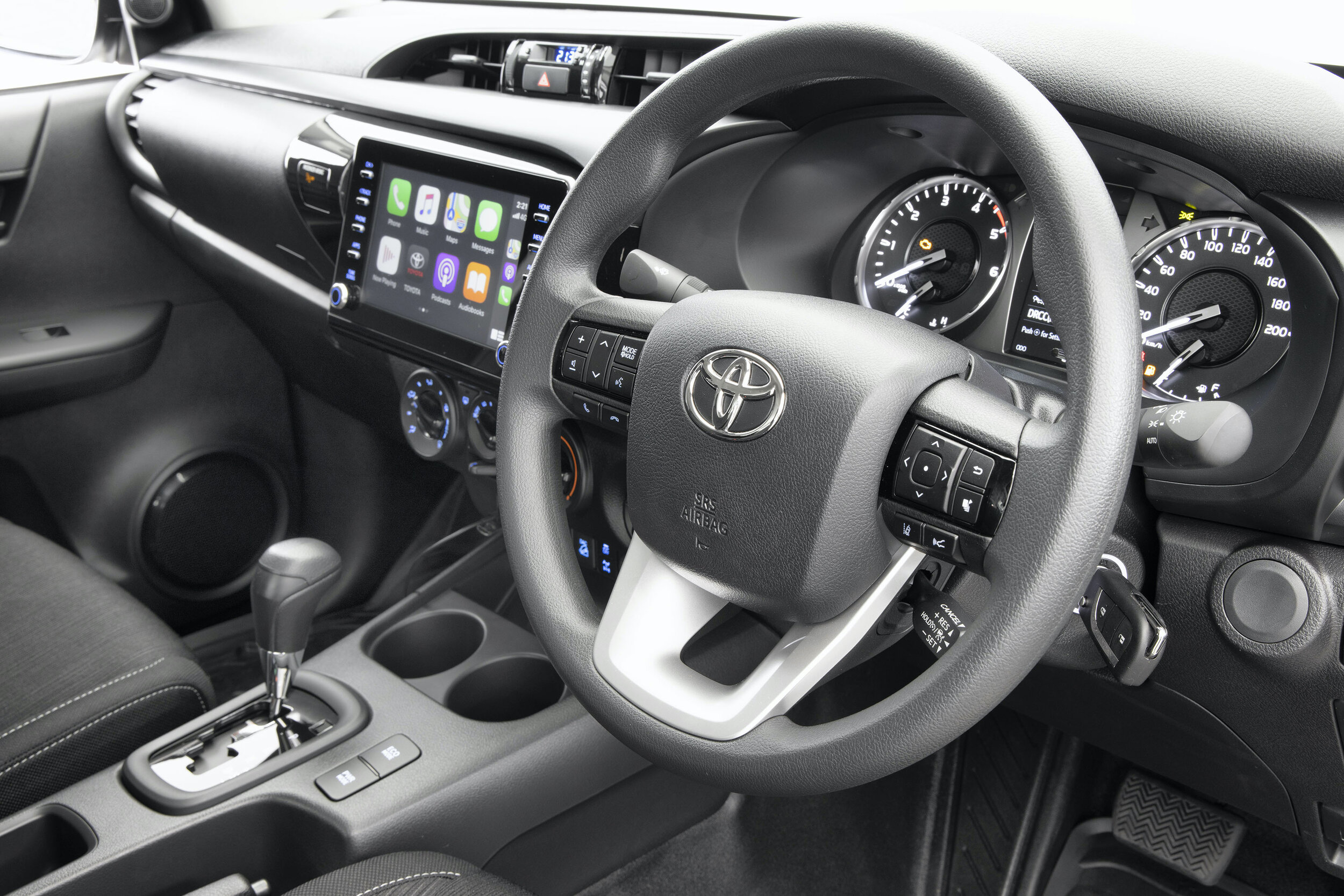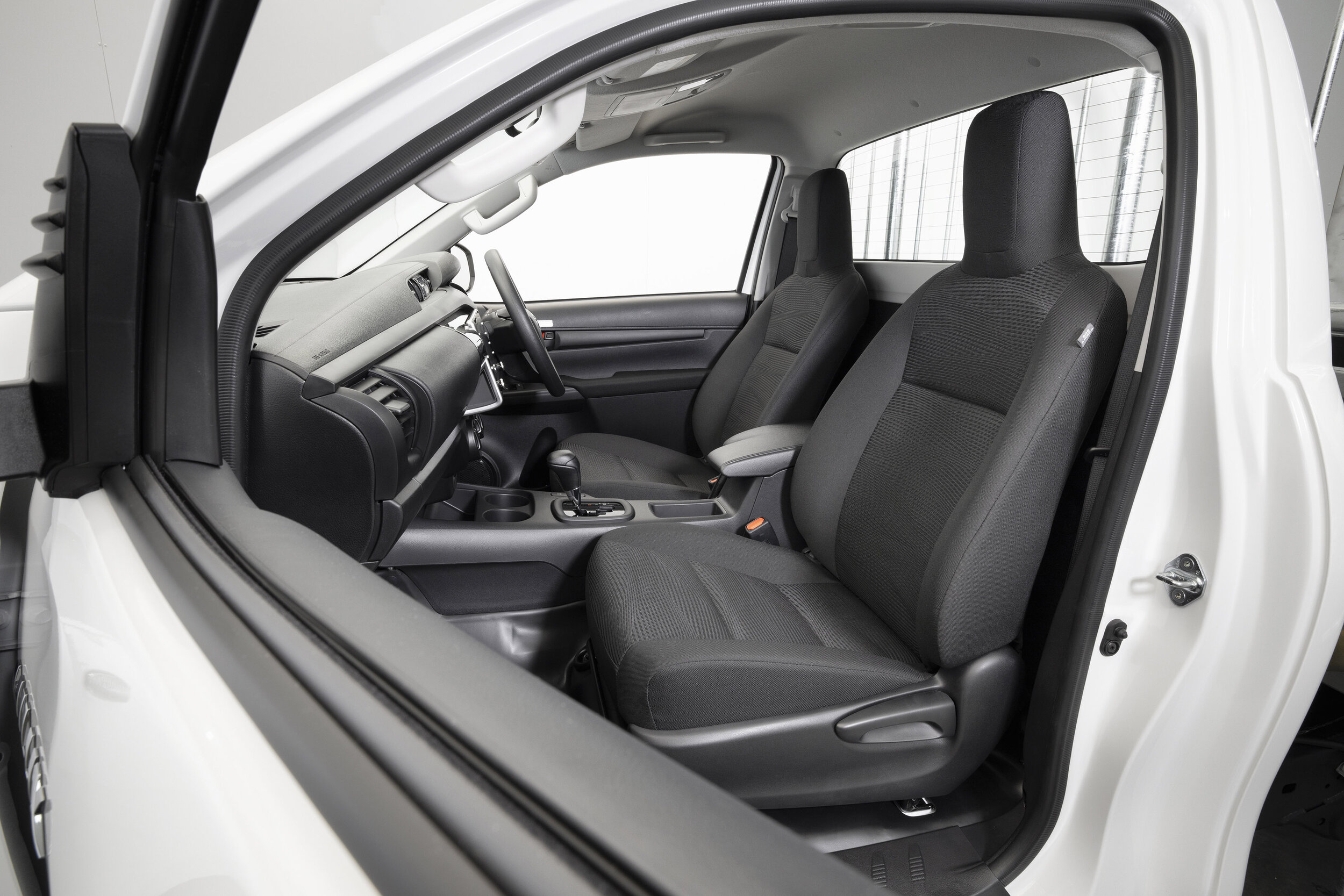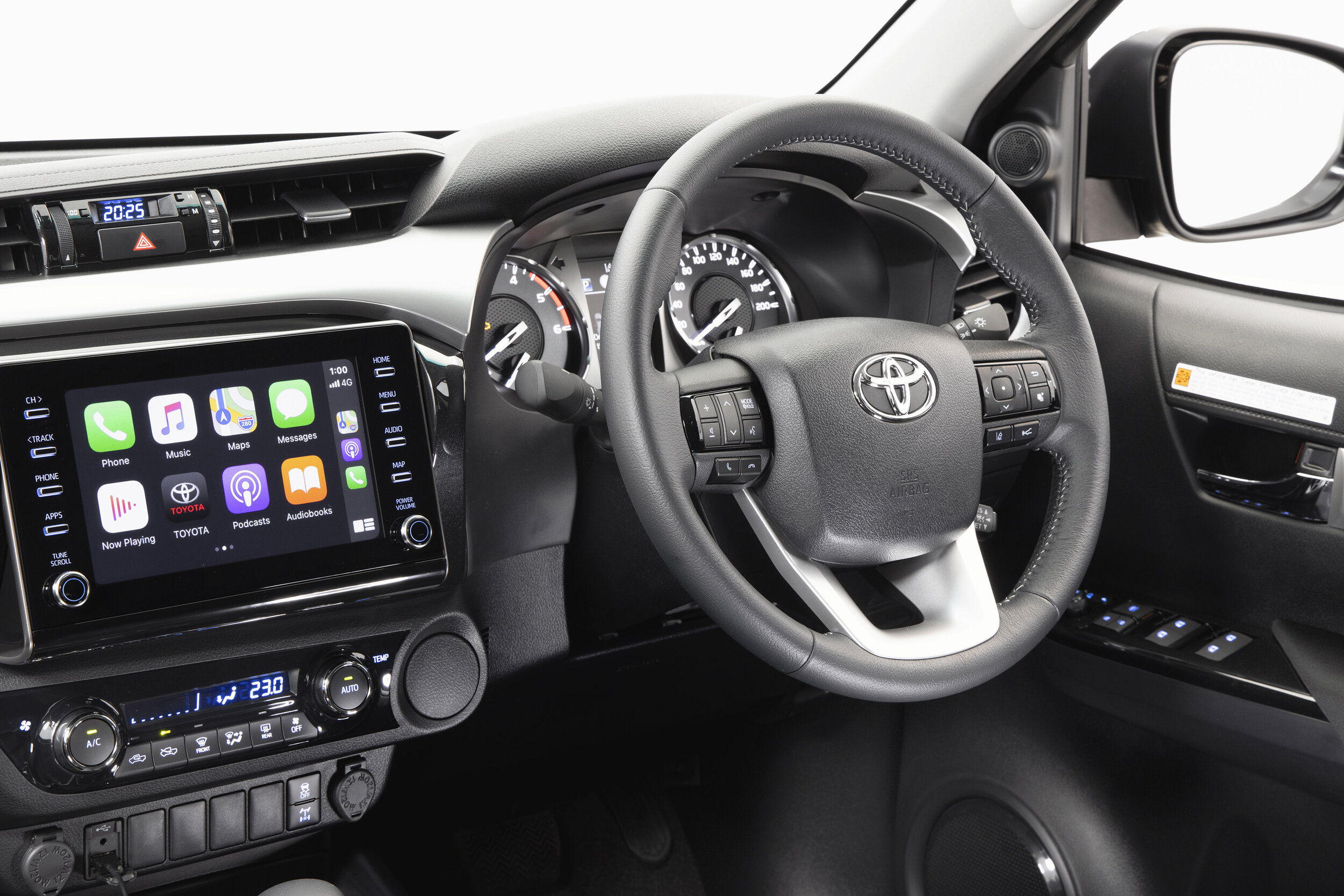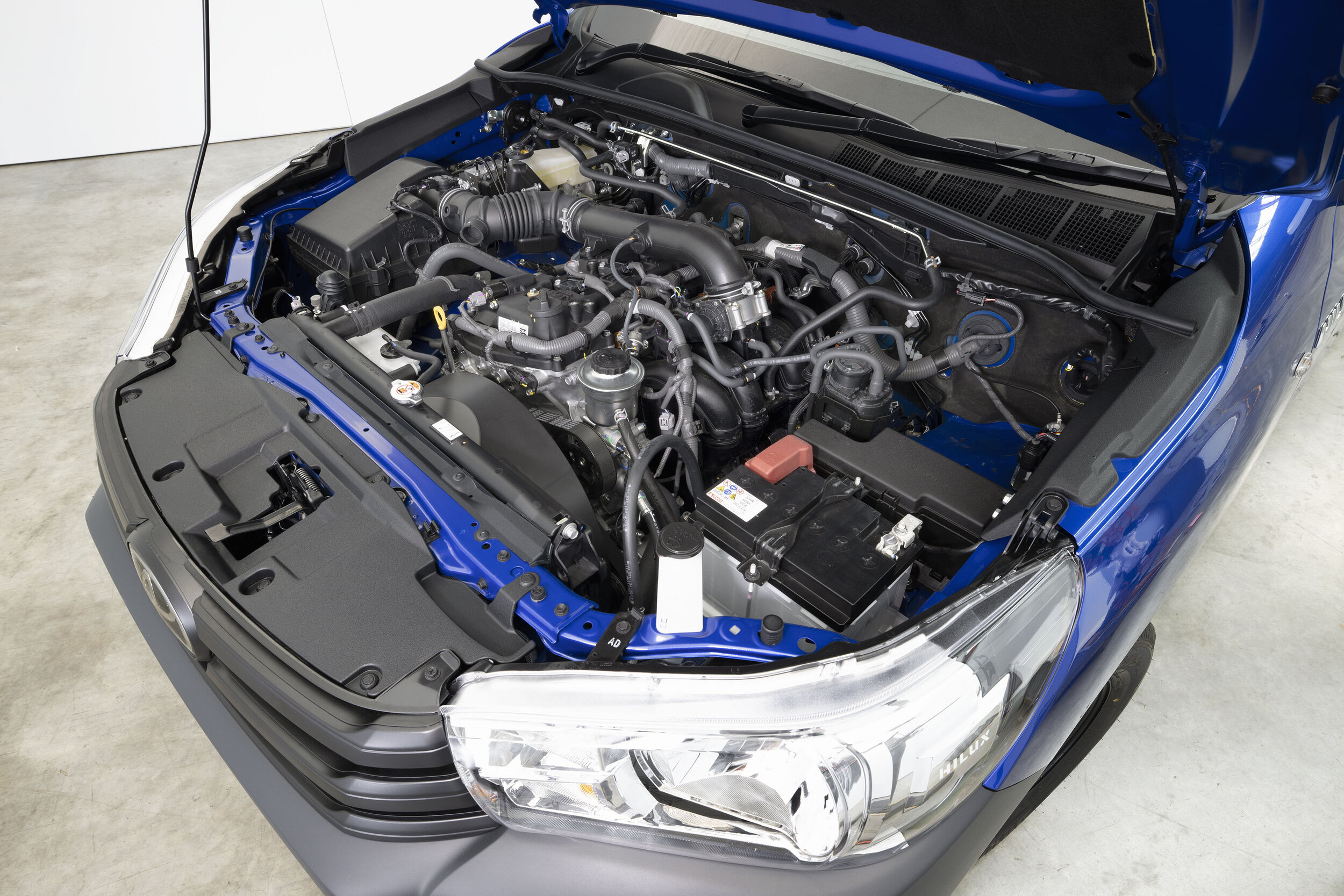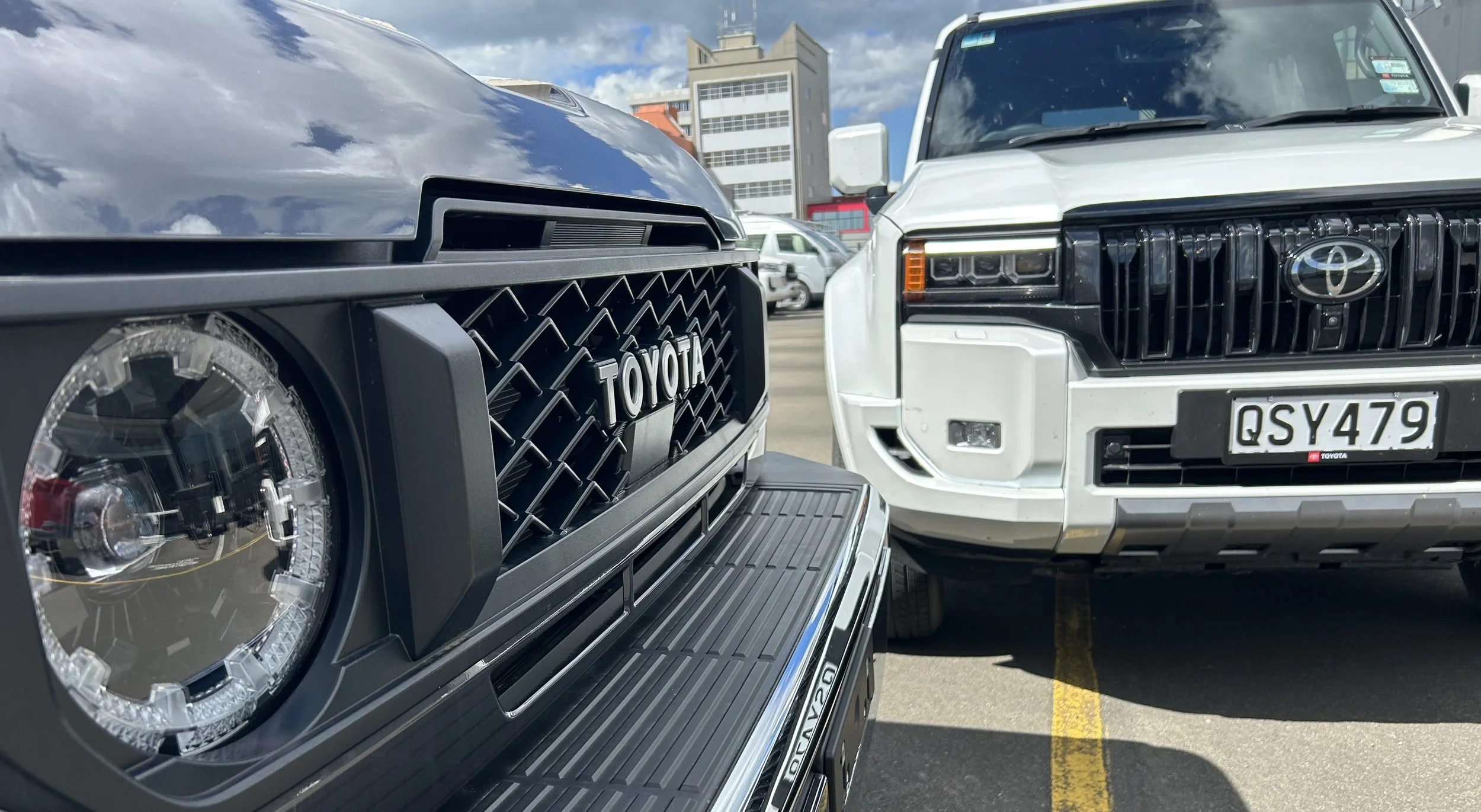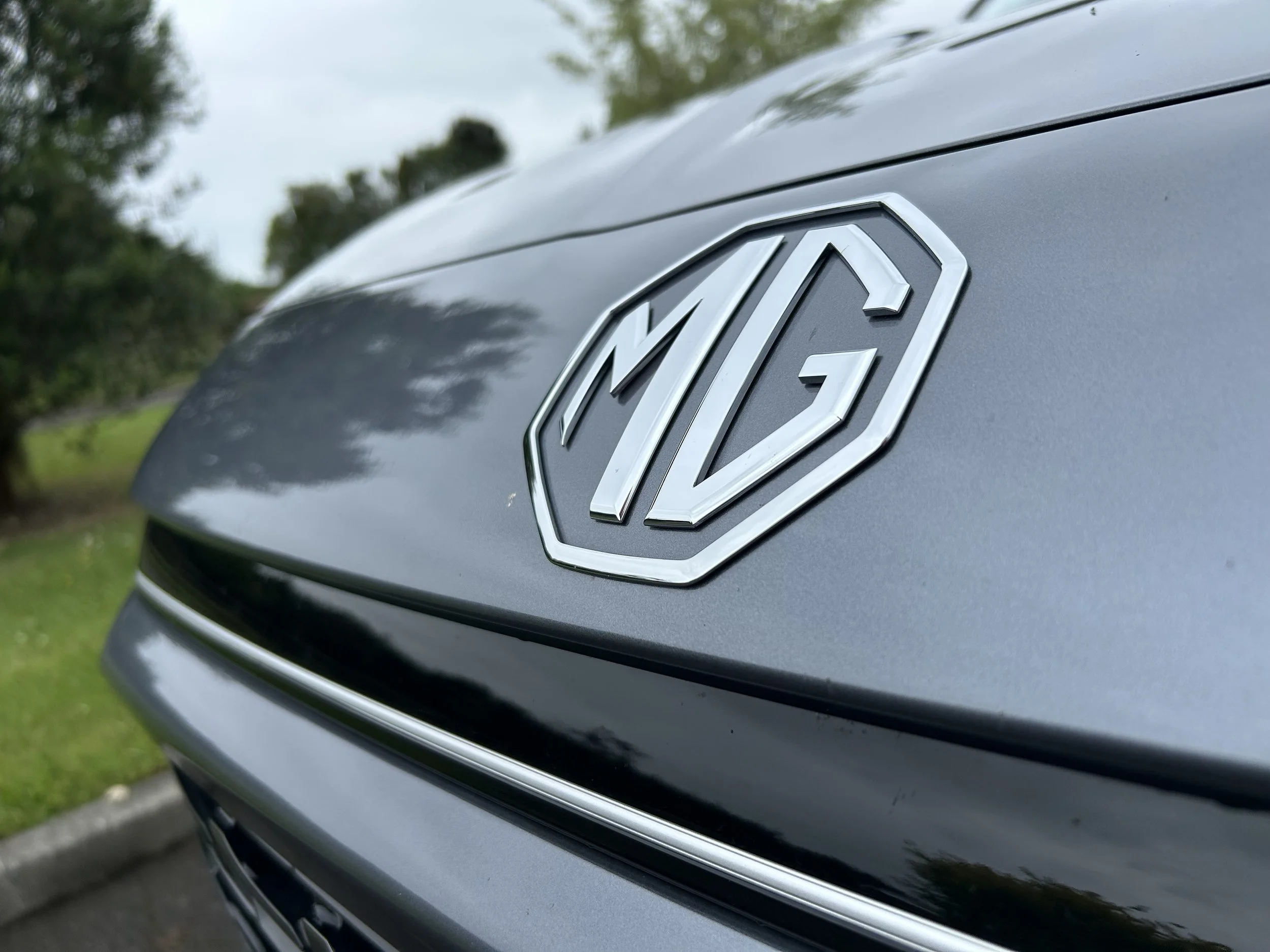Toyota Hilux MY21: The fightback begins
/Better-kitted, a better drive, and maybe better-looking, too. Yup, they’ve done a lot more work than meets the eye.
AMONG brand-shared snippets from the media drive of the facelifted MY21 Hilux was one current fans of the one-tonne traydeck probably give little, if any, thought to.
Toyota New Zealand was discussing petrol-electric. Regardless the Prius has become a virtual non-seller, hybrid passenger vehicles and SUVs have otherwise taken off, to the point of achieving 40 percent of brand volume and outselling conventional combustion-engined equivalents.
Knowing Toyota’s hybrid set-up historically marries to petrol, and that diesel is the lifeblood of Hilux, it’s hard to see any relevance. Yet a hybrid Hilux is in development and has been signalled as a must-have for this country. So who knows.
Still, as said, the current generation model drinks purely from the dark side of the forecourt. Yet wait until you are driving one of the vehicles from the facelifted 2020 line and have to add fuel. It was through doing just this that I discovered a future-proofing tool already known to Prius people.
Primarily useful for delivering to Hilux something most rivals have had for a while, a digital speedometer, the redesigned digital display in the instrument cluster also has economy displays, including something new to Hilux, but not hybrids. A fuel cost calculator.

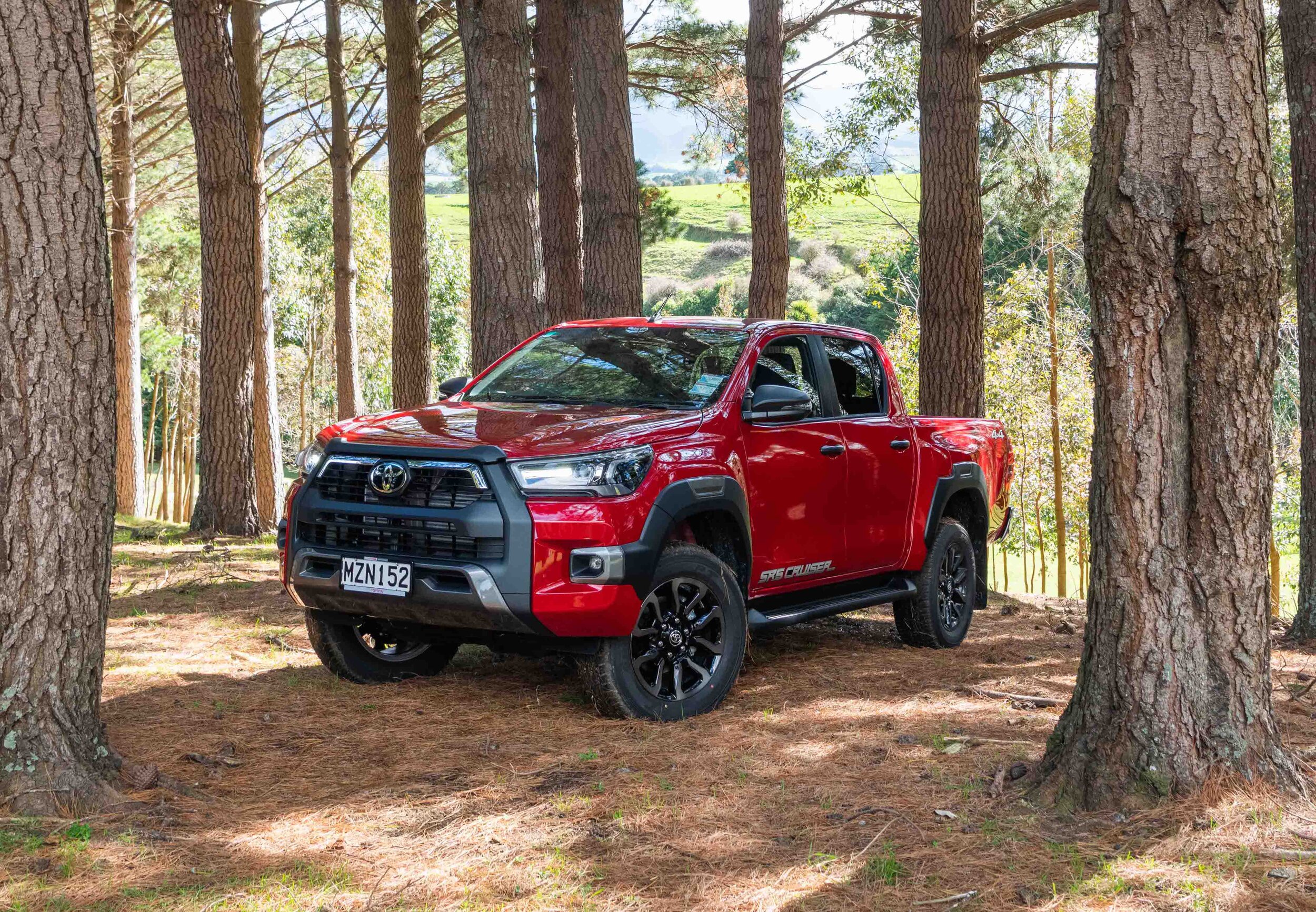
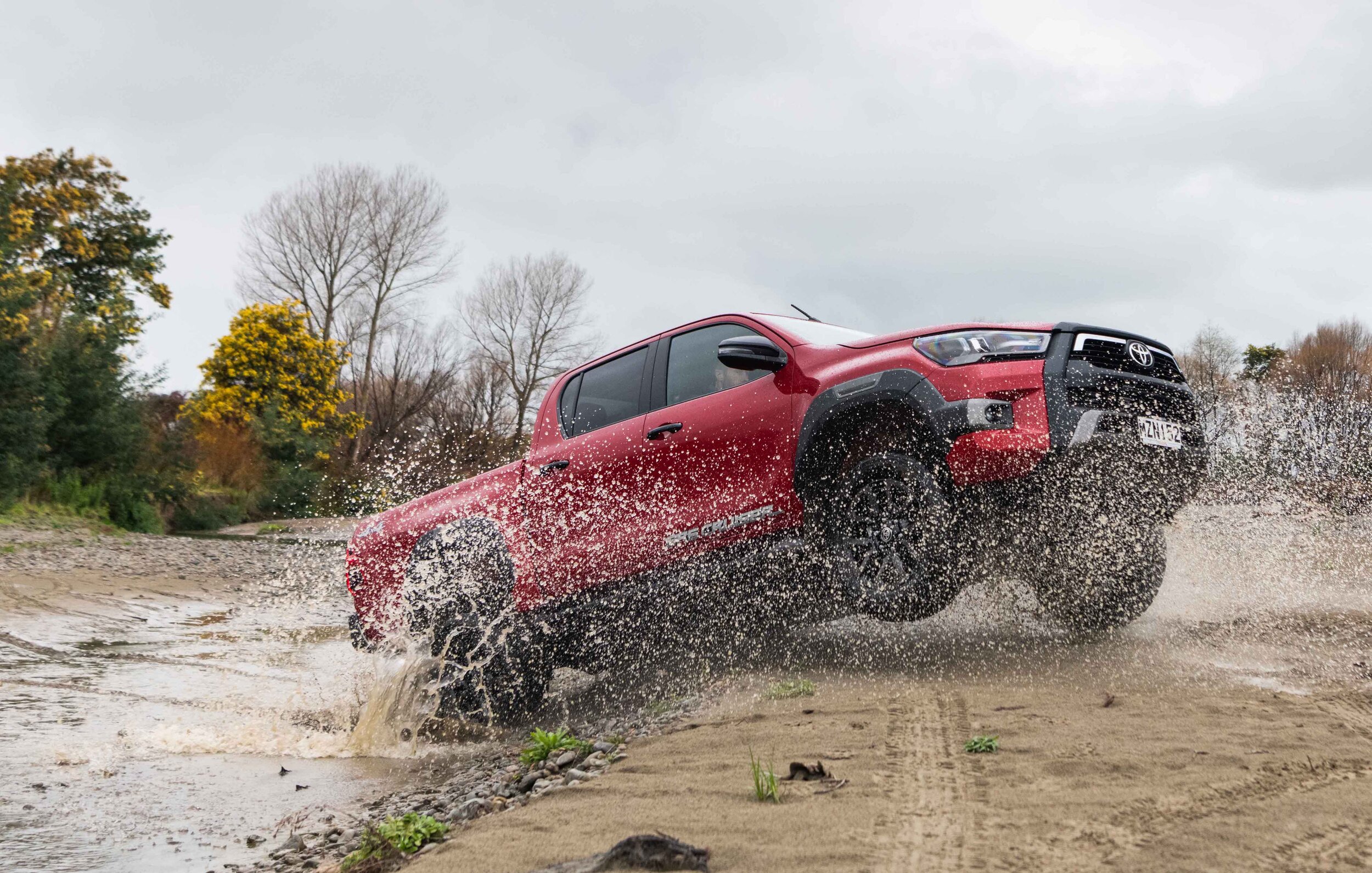
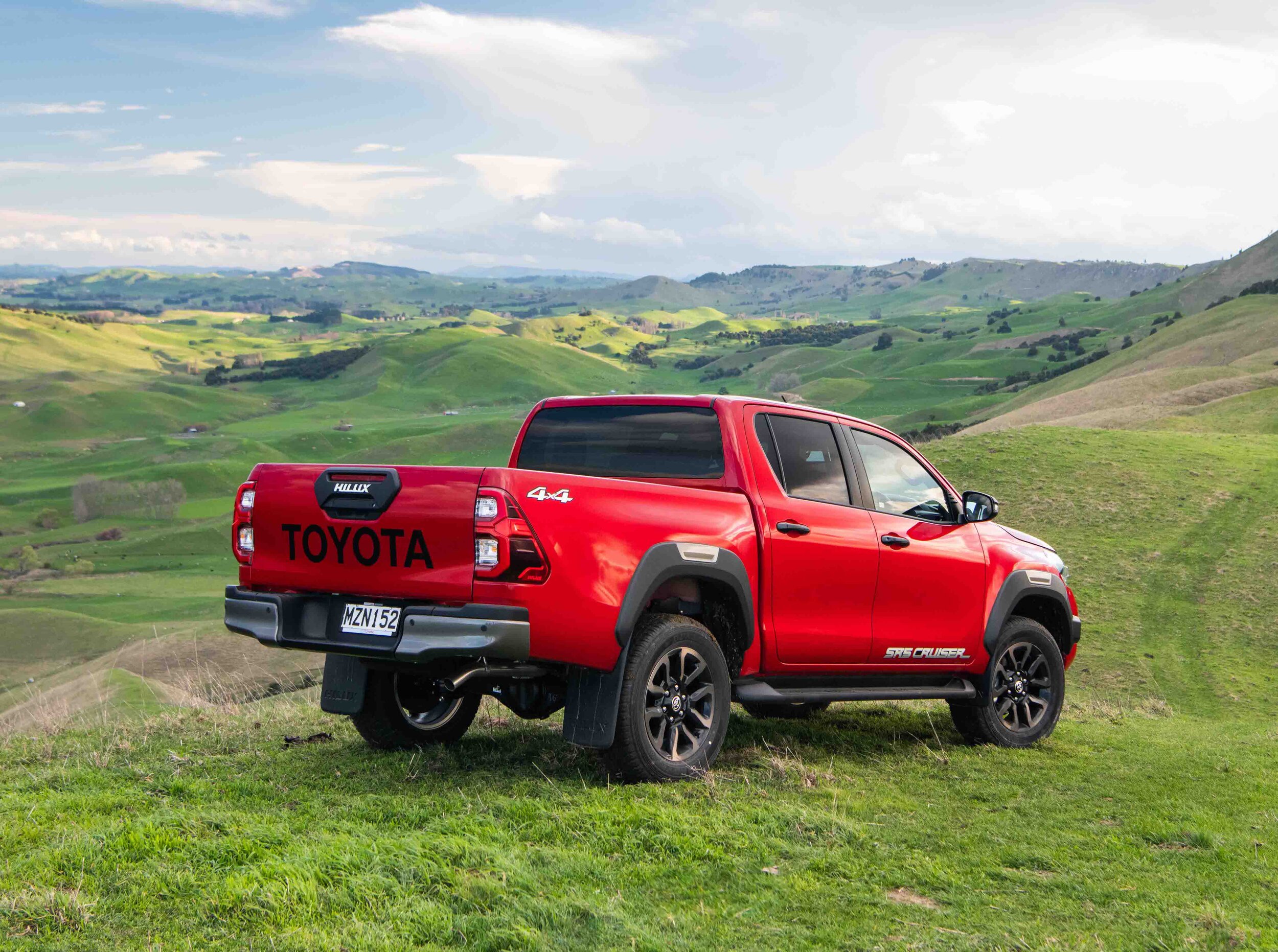
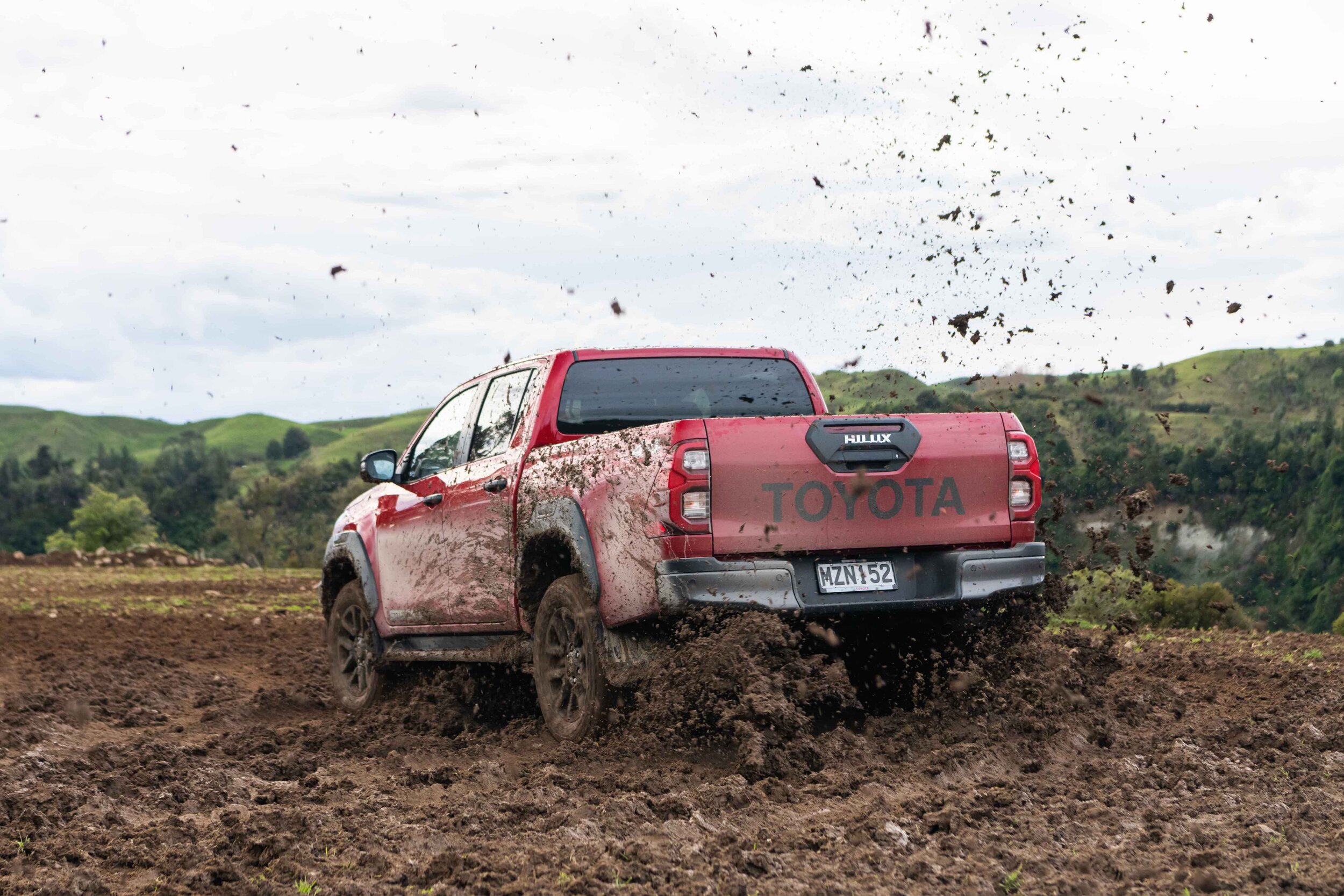
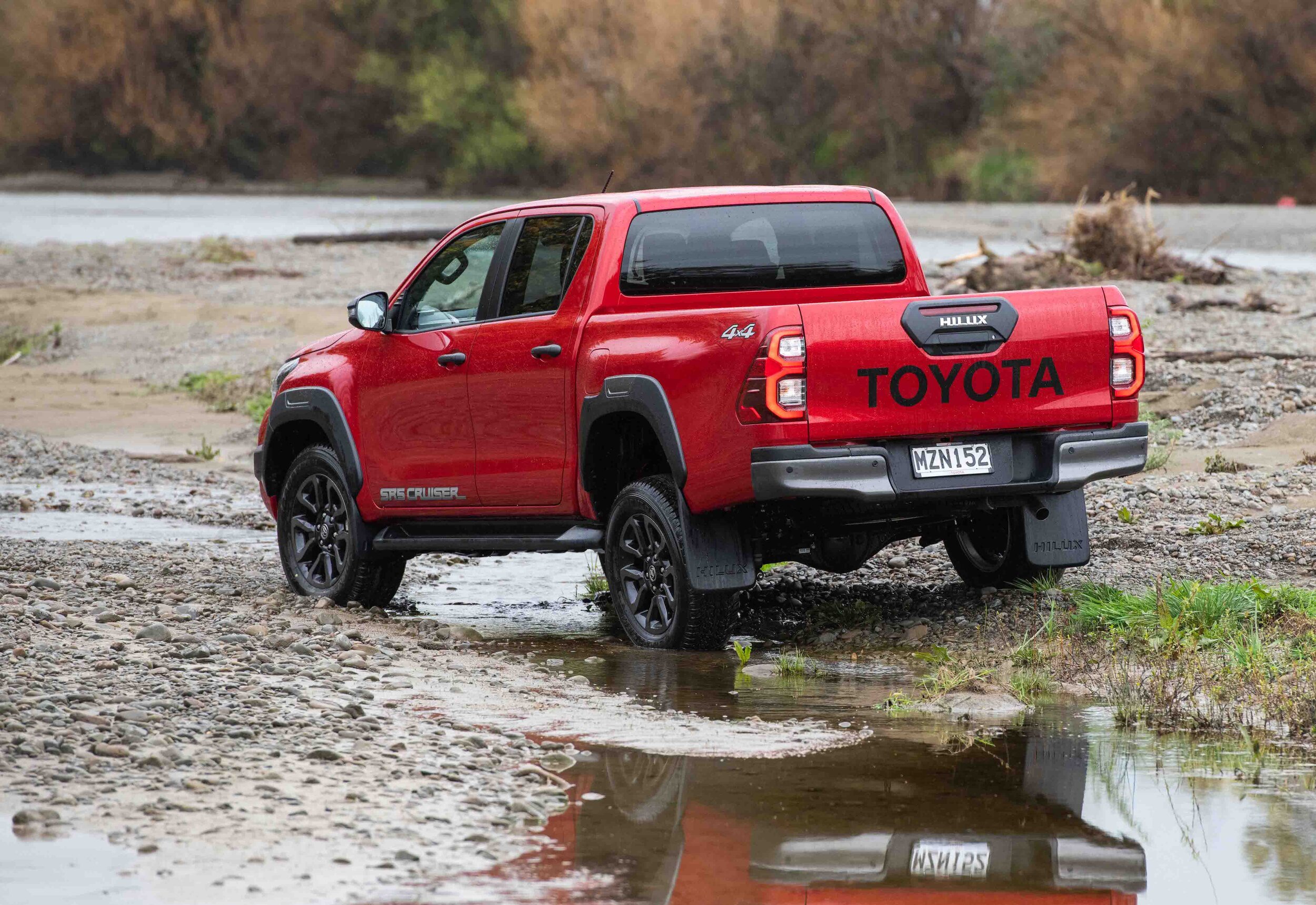
No other ute gets a feature offering opportunity to input the per litre price of the fuel, so that the vehicle thereupon works out your expected costs over a specified mileage. Is this a sign of Hilux prepping well ahead for an electric-enhanced future?
Anything that gets Hilux ahead of the curve is interesting; some might suggest that, by and large, the updates accompanying this new model launching today are as much about catching up as getting ahead.
A digital speedo, the new, larger infotainment screen with the main appeals of Apple CarPlay and Android Auto (plus volume and tuning dials to make it so much easier to adjust settings when you’re on the move), the suspension retune, the engine’s extra oomph … these could be considered carefully-considered improvements to better measure against an opposition, one rival in particular, that might have already been there, done that.
No problem with that. Hilux has always been a strong, trusted rig. From driving a selection of doublecabs - in SR5 and SR5 Cruiser format, all four-wheel-drive autos (the manuals have only just landed), mainly on seal between Palmerston North and New Plymouth but with a touch of off-roading on a farm at Waverley to test the electronic assists - the MY21s are exemplars of extra good done better than before.
Discovering the biggest, most vital improvements is no problem. It’s easily felt in the driving, obvious in the new look and feel. Pre-facelift flaws that allowed so many old fans to abdicate the Hilux and switch their allegiance to a ‘certain other’ have been sorted. If I was a Ranger owner needing a change, at least until the new Ford comes (and proves itself), this is the easily the best new seat to slip back into.
Nice to get a truck that gets back to fighting fitness with negligible price adjustment. The biggest single sticker upshift asks for an additional $2500 and the justification is easily argued.
Evidenced most strongly on high-rider and four-wheel-drive models, the new shield-style look drawn at Toyota Australia's design centre in Melbourne and inspired by the Toyota Tundra in the United States fits comfortably and suits the new mood.
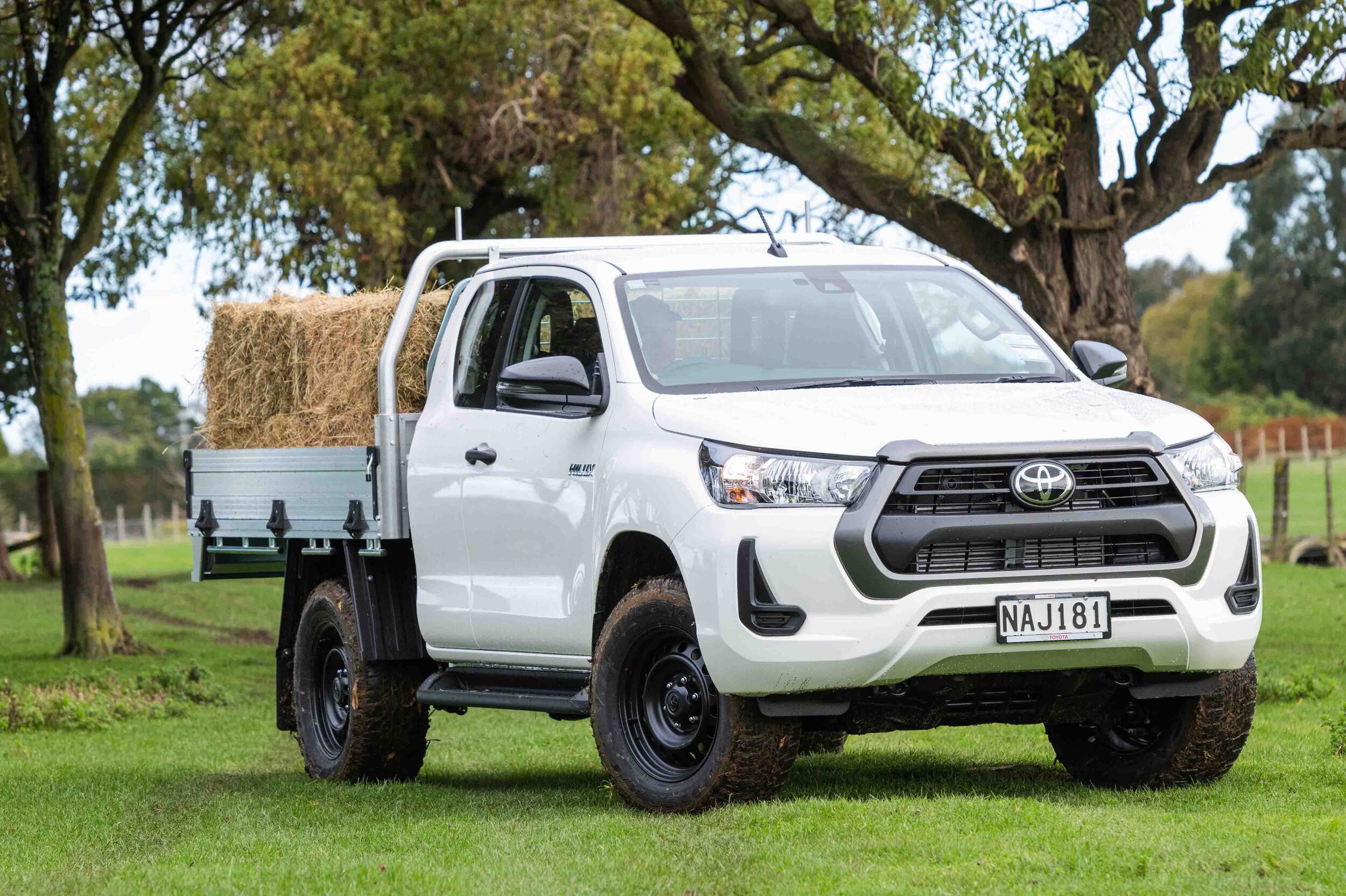
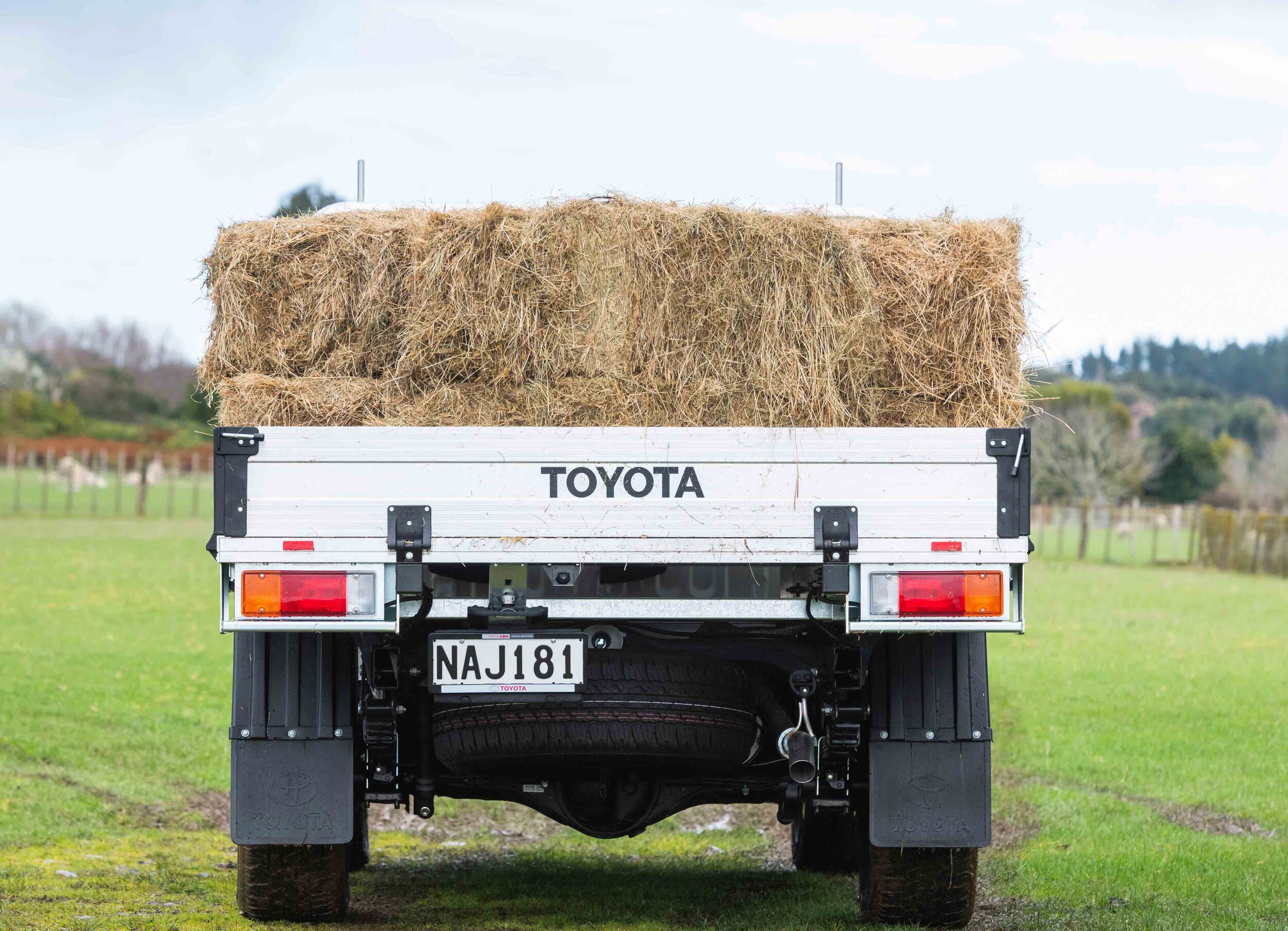

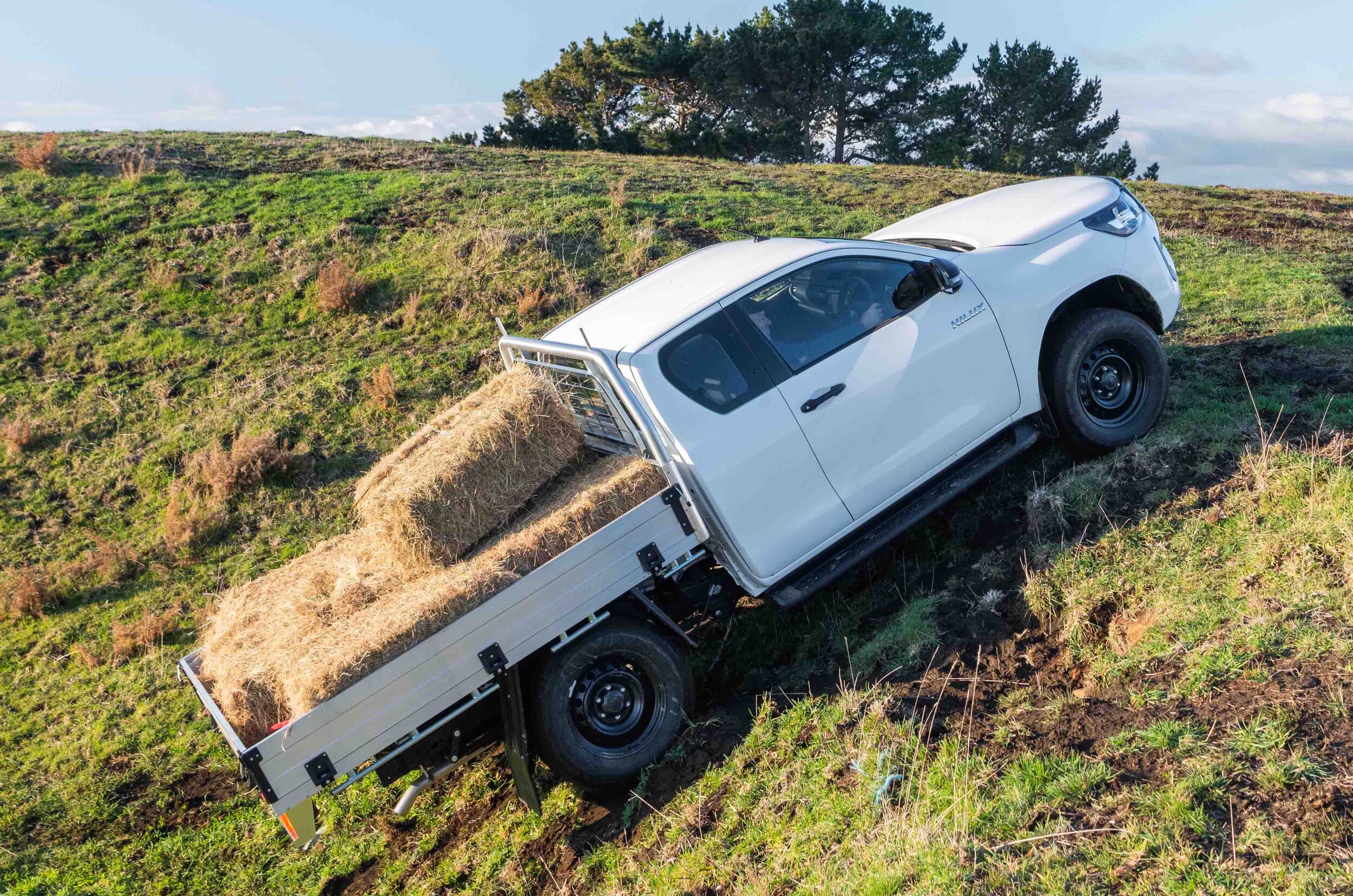
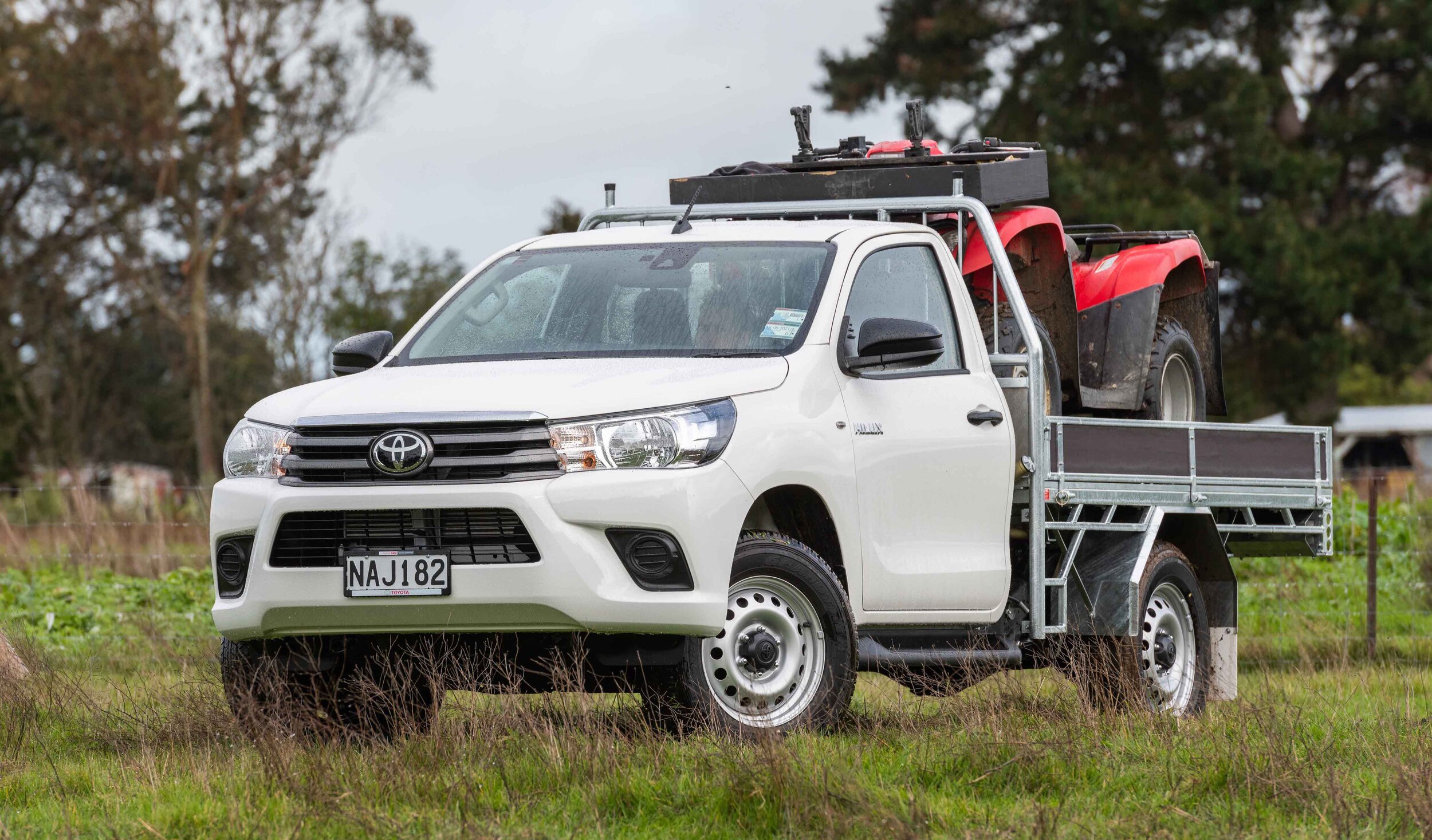
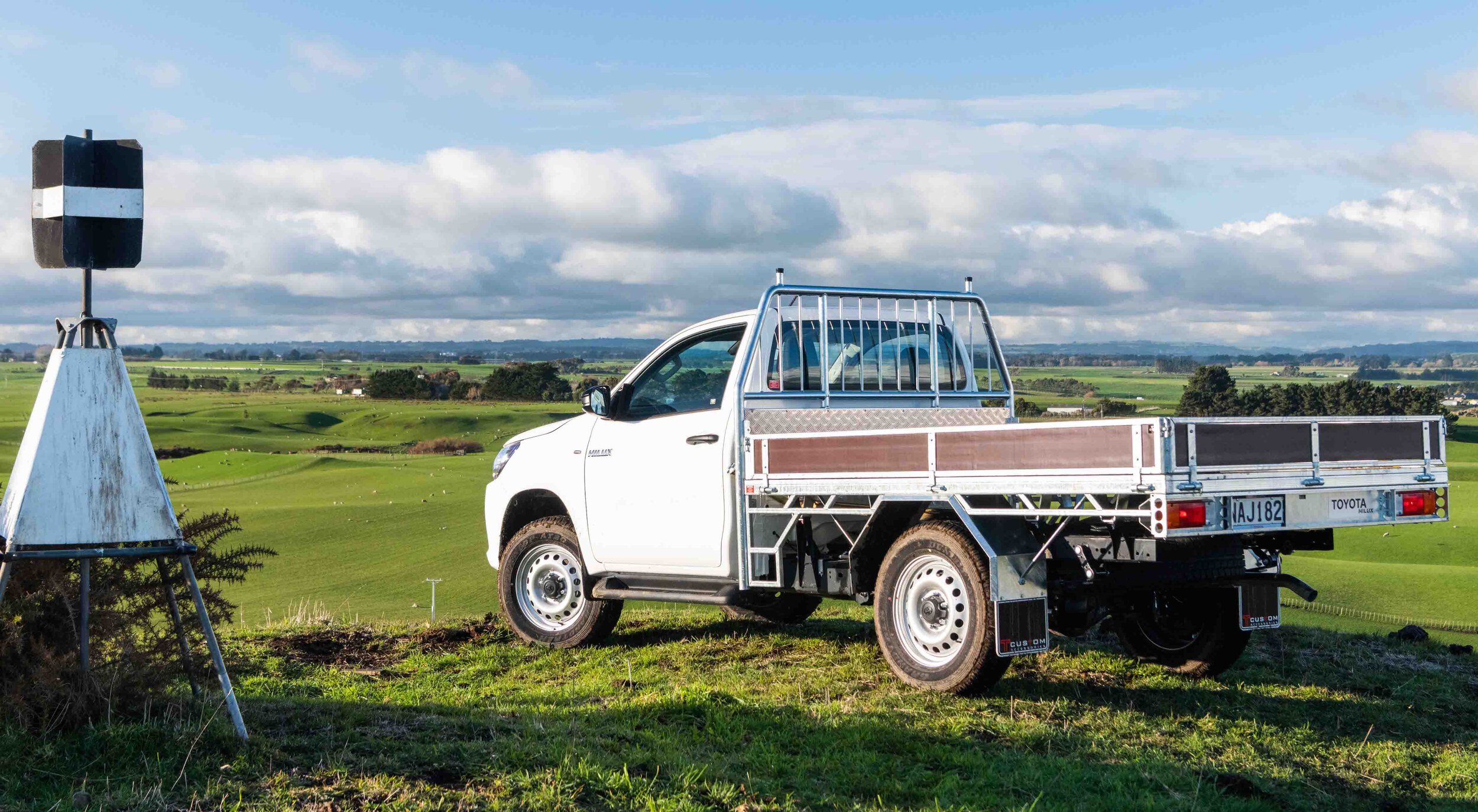
The real points of owner pride will be the revisions meted the drivetrain and the suspension.
The 2.8-litre turbo diesel four-cylinder introduced in 2015 has had a power boost from 130kW/450Nm to 150kW/500Nm when paired to a six-speed automatic transmission. The manual has the power lift, but maintains the forebear’s 420Nm, but is nonetheless also now rated to tow 3500kg.
The engine is quieter than before and the torque spread is far broader; the extra grunt from lower revs evidences nicely and the six-speed auto doesn’t mind at all about having to handle all that extra muscle. If any thing the shift quality has improved.
The fix to the diesel particulate filter has been well covered. It was interesting that one of the utes I drove initiated a DPF cleaning cycle while I was driving it. I hadn’t expected this process (which indicates on the dash display and seems to take about five minutes) as the vehicle had just 1919kms’ on the clock at the time.
Utes can be bouncy, skittery things when unladen. That’s just the nature of the type. But Hilux used to be particularly so and it could be wearying. So it copped flak for this. Toyota has always used Australia’s hinterland as a testing zone for Hilux’s development, and engineers spent much of last year out there reworking the suspension. It’s an effort that has paid dividends, with a noticeably more compliant and sophisticated ride. The settings are the softest Toyota has ever dared mete a modern Hilux, according to background scuttlebutt, but it’s the right way to go. Bumps are soaked up yet it doesn’t wobble.
Sure, it’s not car-like, but given none of the load-carrying ability has been sacrificed, you can hardly complain. And in unladen state, you get to enjoy a safer, more balanced and more predictable drive. Just like a Ranger? Well, they’re a lot closer, that’s for sure.
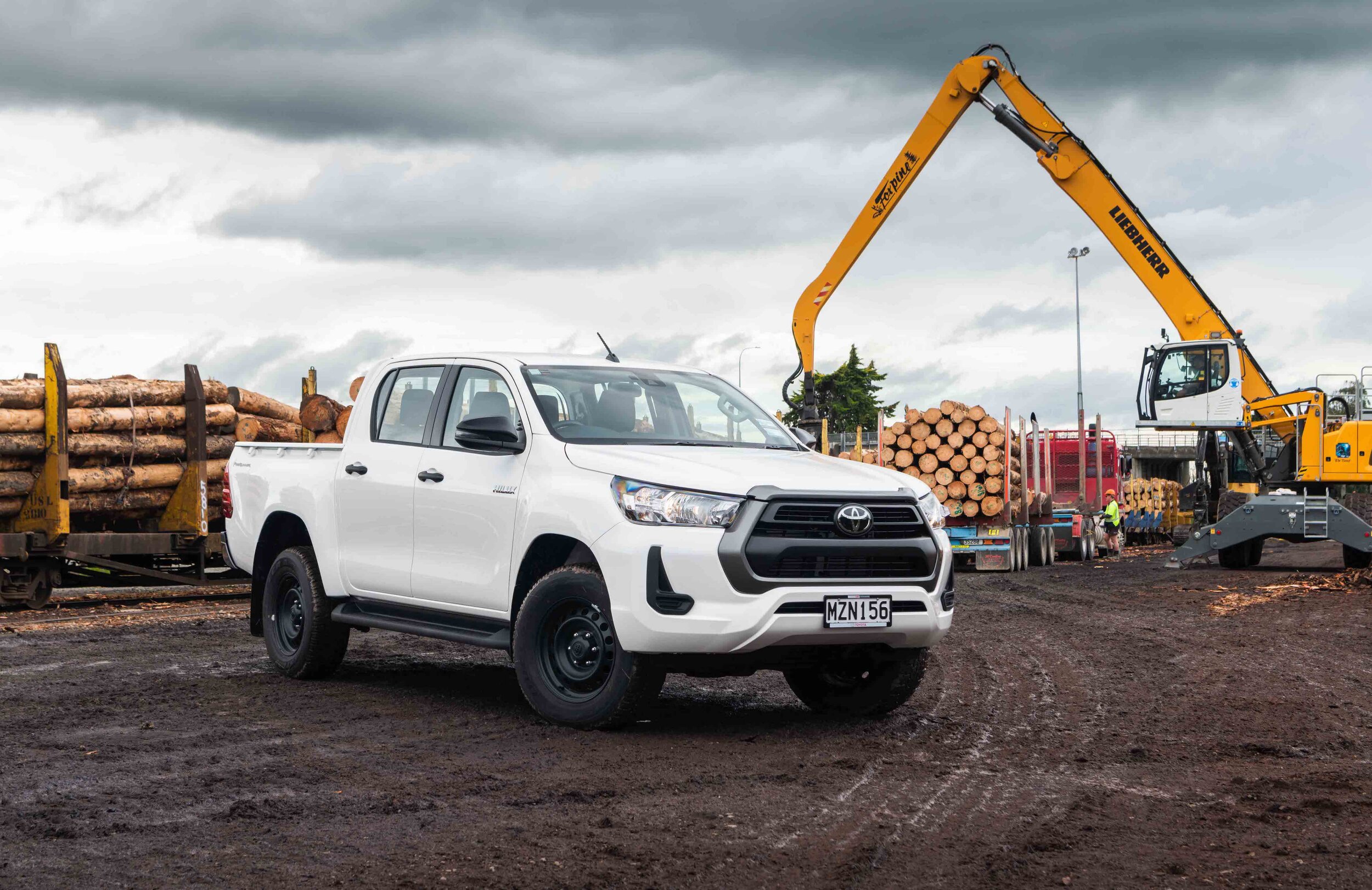
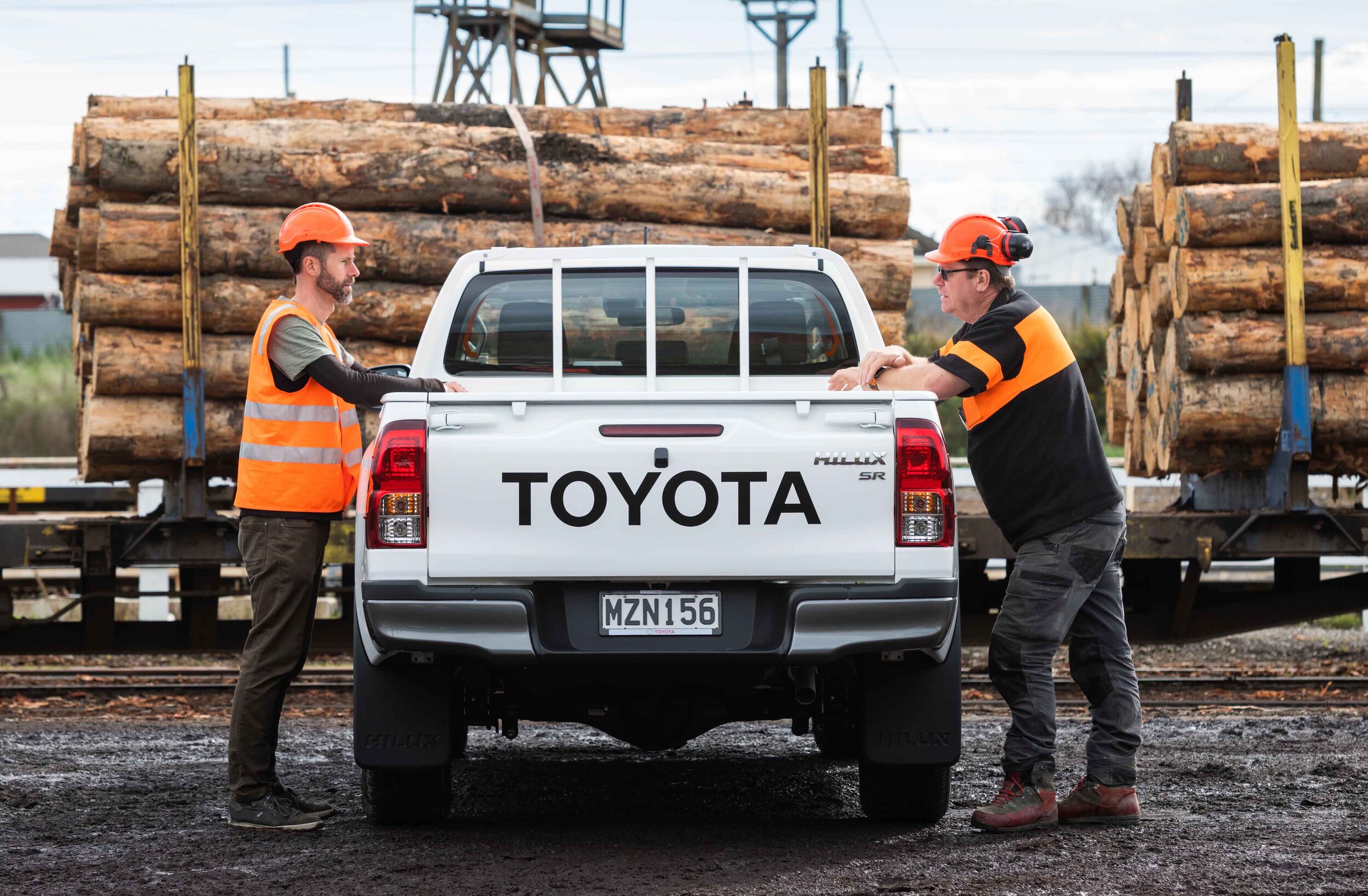
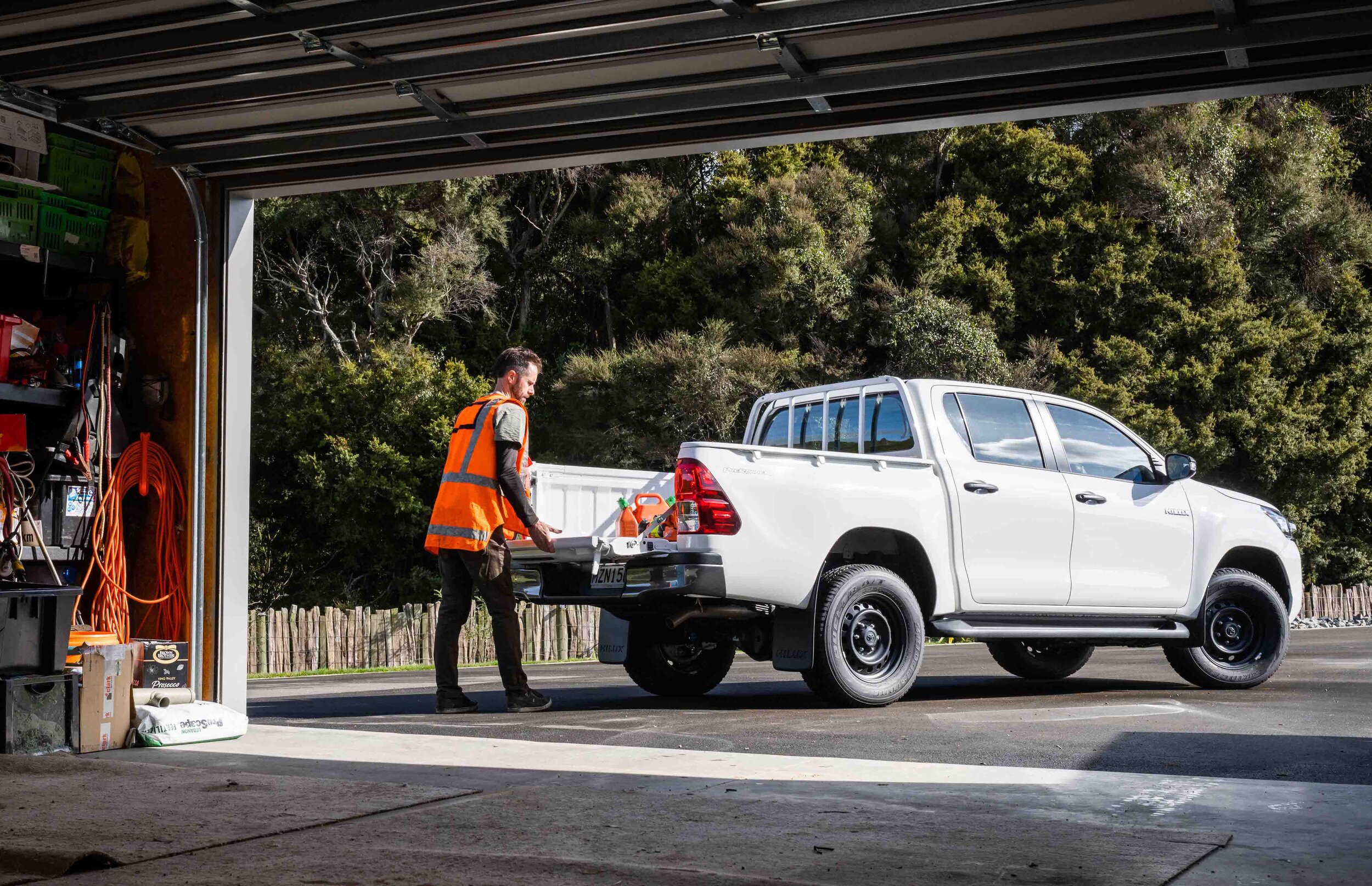
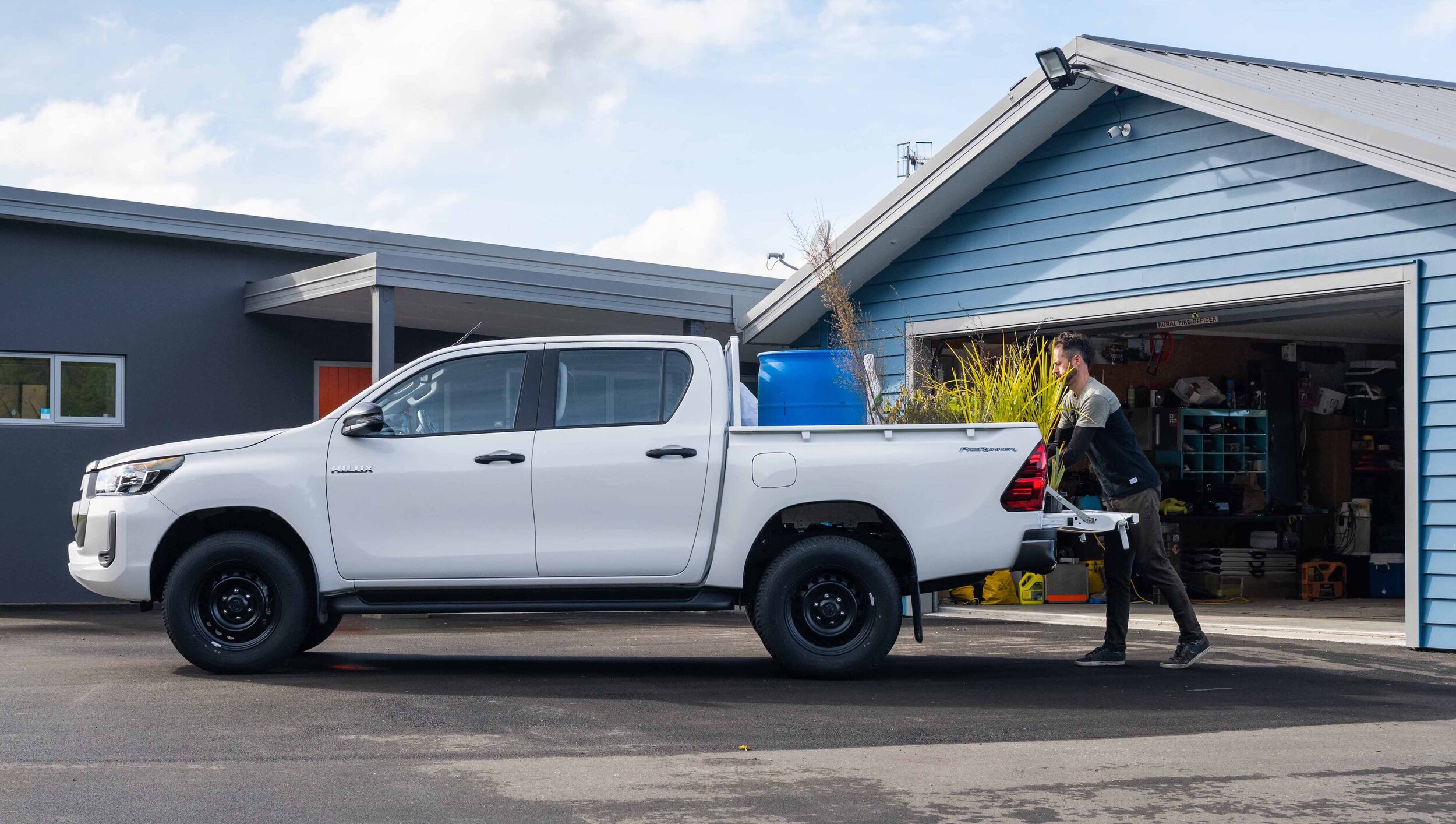
That’ll appeal to the family users that flock to the high-end wellsides, of course; parents of car sickness-prone kiddies shoved in the back will be relieved. But it’s not just beneficial for townies.
The flatdeck we took from the Lupton farm at Waverley (yes, home of Melbourne Cup-holder Kiwi, now buried in the front garden) through to Dawson Falls, was a confident drive, too. So it’ll get the farm dog vote, for sure.
In sorting the suspension, there’s a sense the Bridgestone Dueller rubber is getting better opportunity to get a grip when it counts. The power steering has been revised but is still hydraulically assisted. It feels better than before, albeit heavy compared to the electric power steering set-ups now coming into this category. The brakes deliver modulated pedal feel. There are four-piston calipers clamping 319mm front discs up front and drums at the rear, as per class convention.
The only element lacking that would offer even more improvement is an ingredient just the VW Amarok offers in this sector: Full-time four-wheel-drive. Yes, Toyota’s system does allow for high-range all-paw engagement on seal, but only in certain circumstances. And the Hilux 4x4 now has a rear auto limited slip differential which works when the ute is in two-wheel-drive. But for ultimate traction you can’t beat having all four wheels working all of the time.
Slide into the cabin and, that new mid-console aside, it’s all familiar territory; so, some hard plastics and a quality, tight finish.
The screen’s integration works best in the Cruiser – it sits snugly above the air conditioning panel, whereas models with manual air con are less well integrated. In these the bottom of the screen hangs out enough to impede sight of some controls. A tall driver will need to duck slightly to see if the A/c is active, for instance.
The infotainment update spells an end to a CD player, but will you care? What doesn’t make sense is that Toyota has implemented technology to better suit phone integration yet has determined to deliver just one USB charging port within the cabin: In this connected age, that just doesn’t compute. Yes, there are two 12V sockets (which you could use with a USB adaptor if necessary) and a household power socket (220V, 100W) in the centre console to run a laptop if necessary, but overall it’s just not smart.
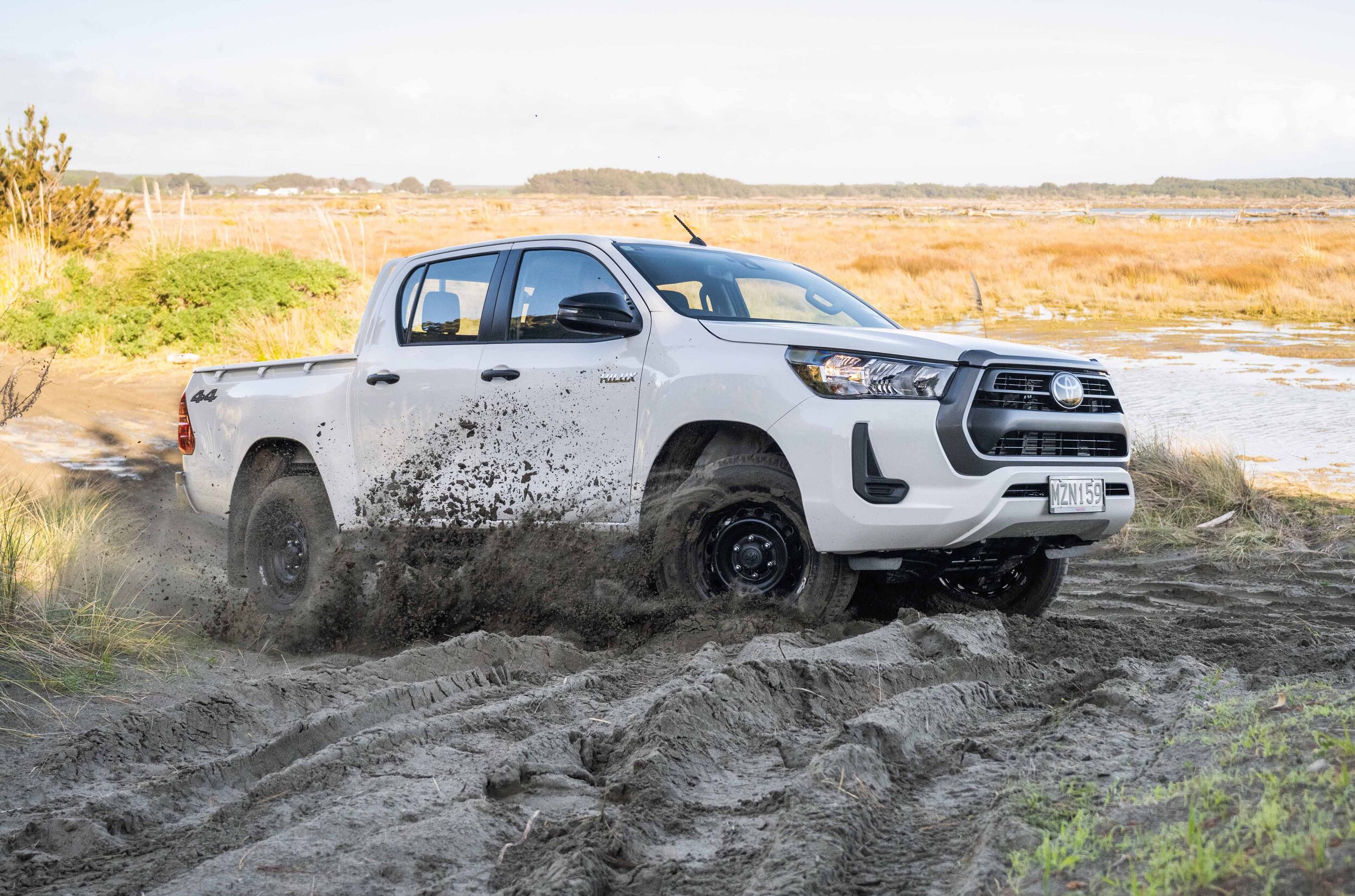
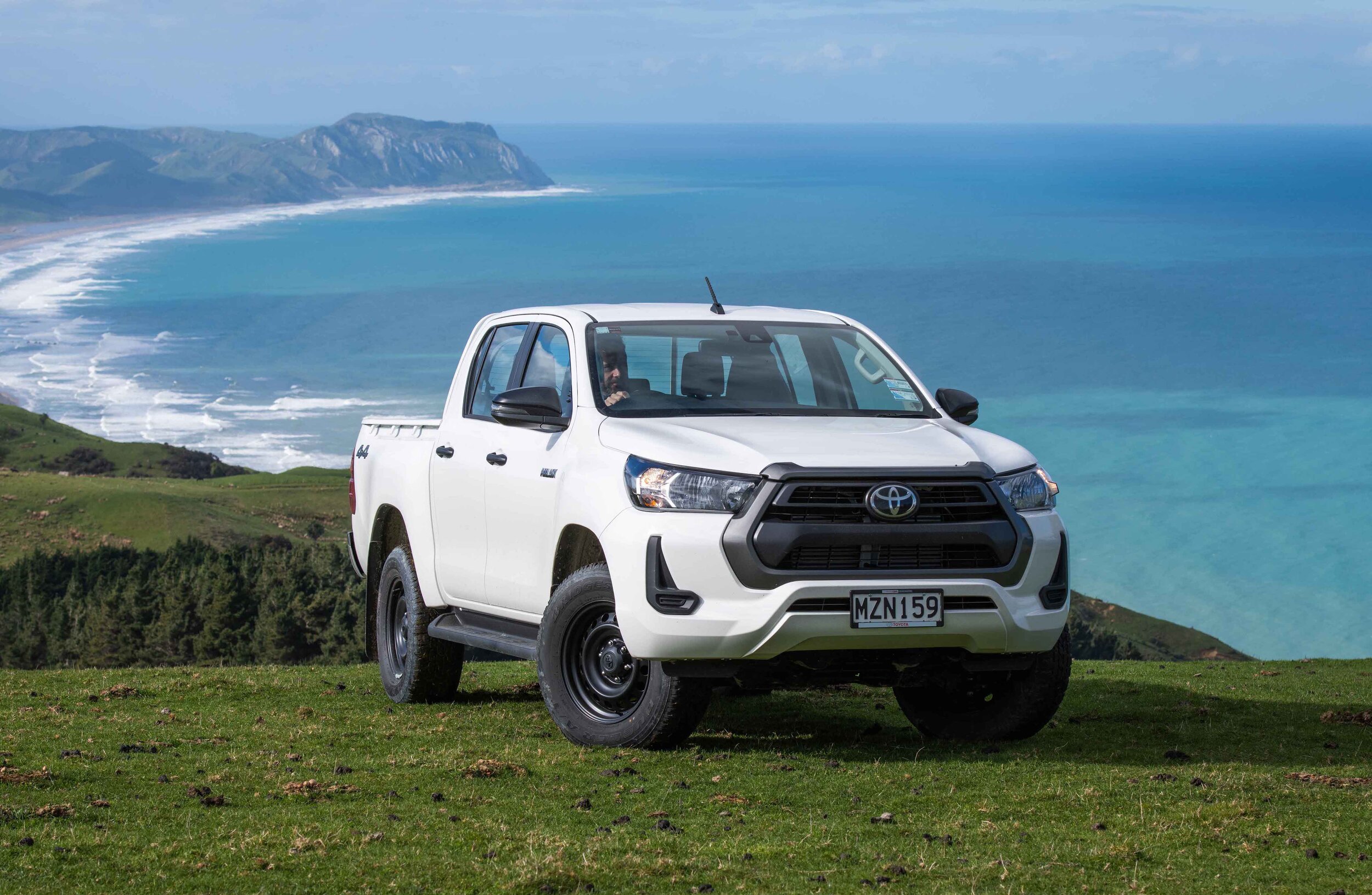
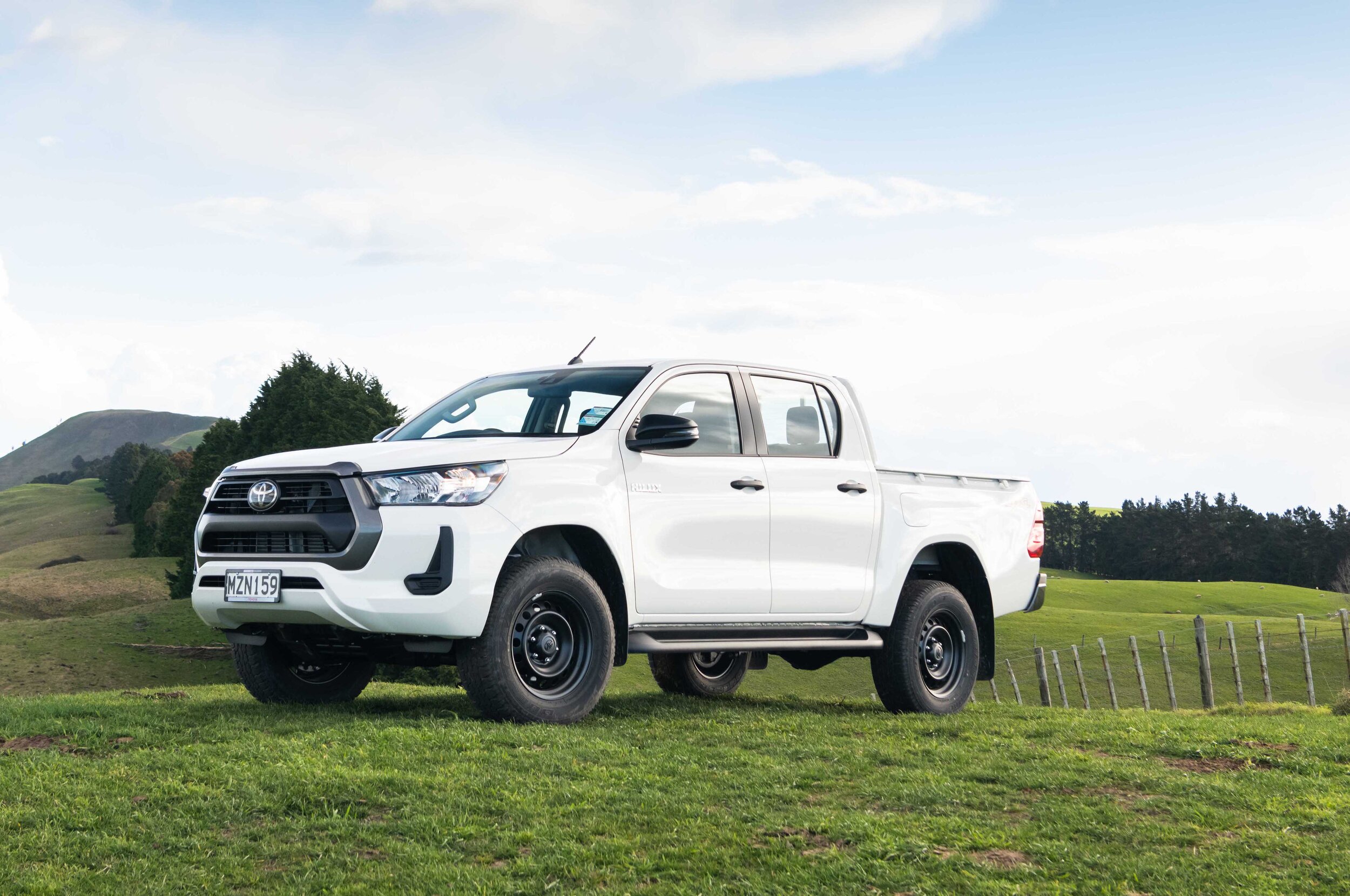

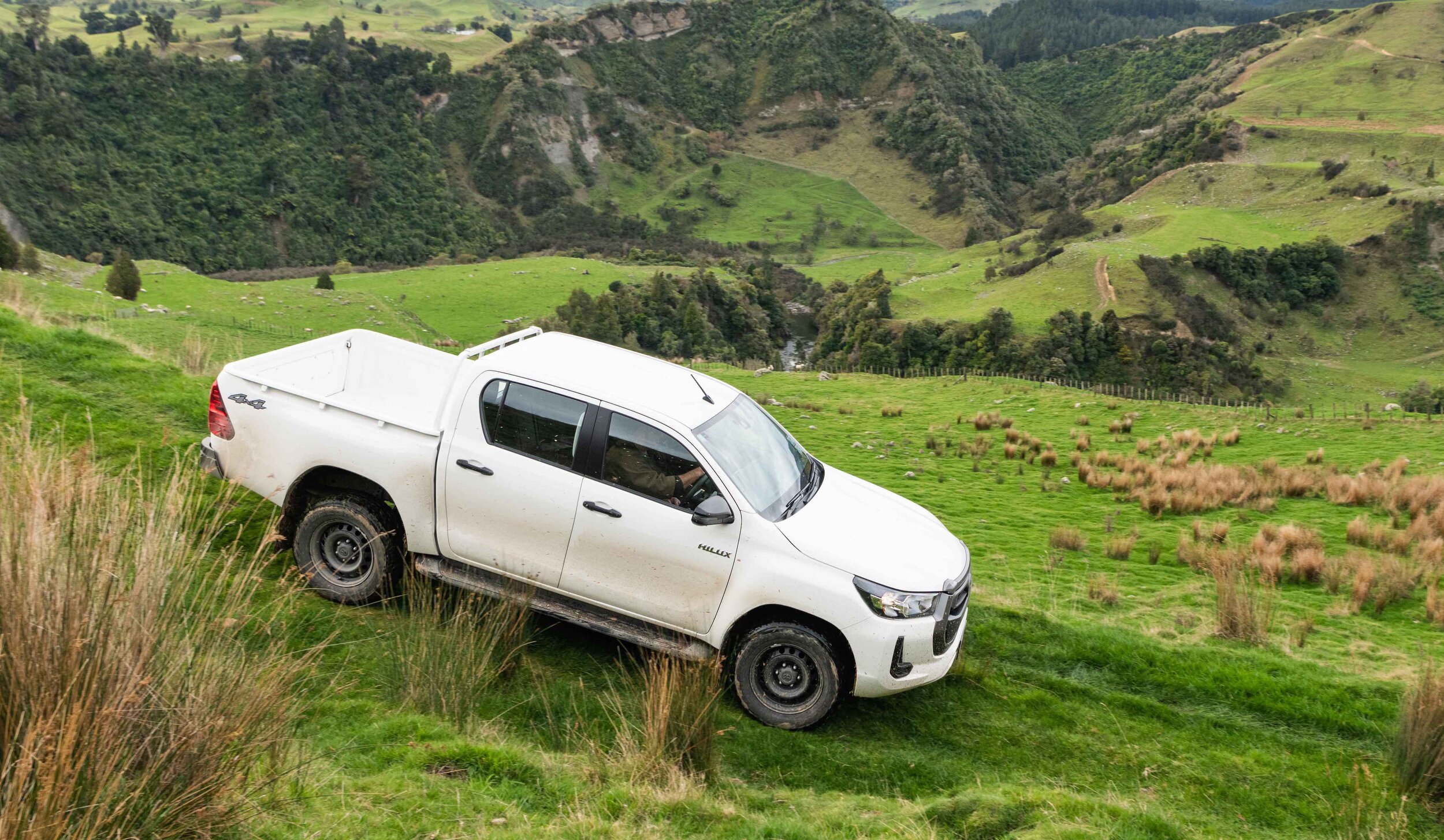
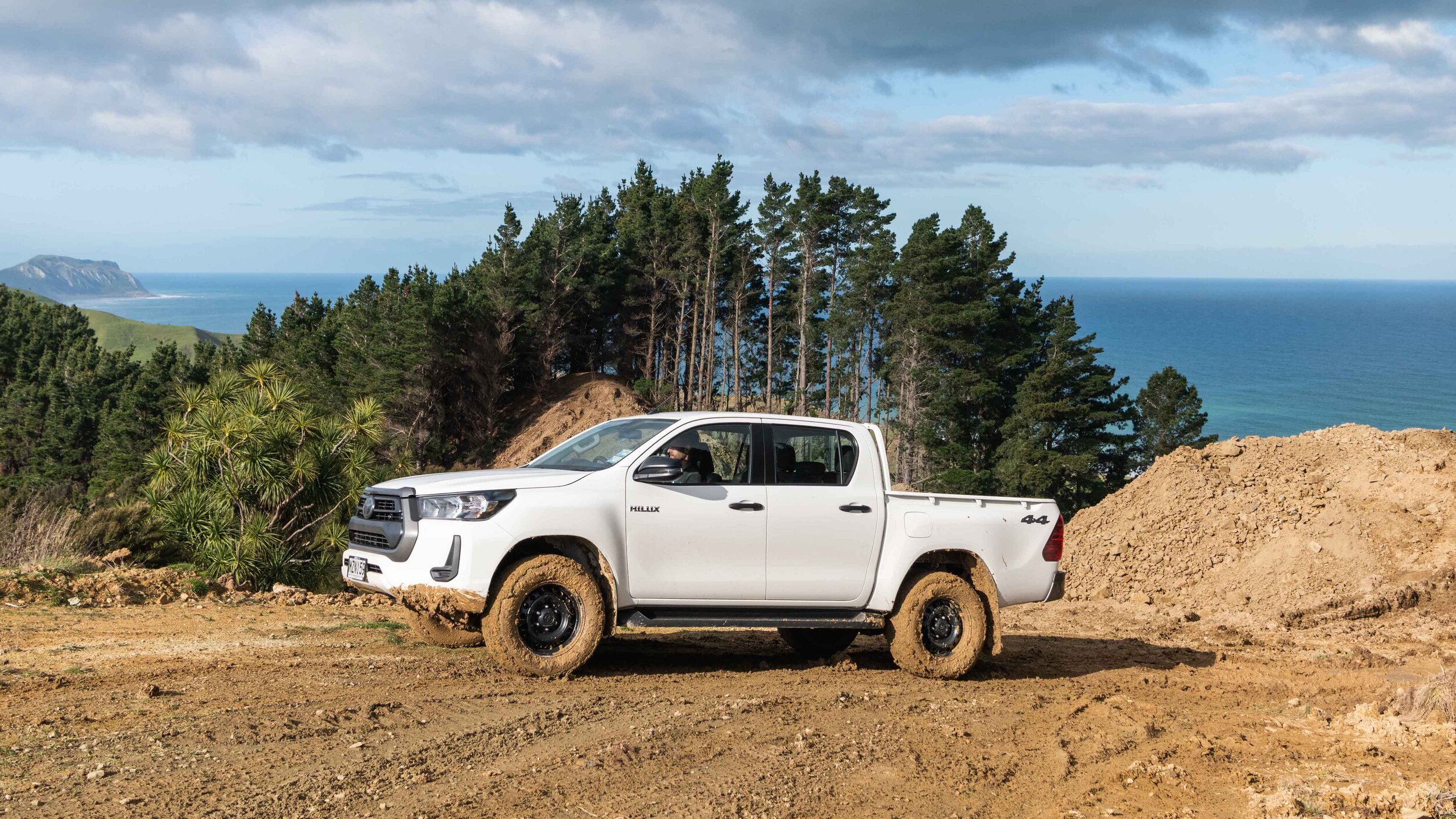
Toyota still hasn’t bothered to put a vanity mirror in the front passenger-side sunshade (hey, I don’t care, but others might) and the top spec doesn’t go to dual zone air con, which others offer, and some variants lack push button start. Only SR5 and higher grades come with front and rear parking sensors and the new bi-LED headlights – which you’d assume will lend much improved performance - and LED tail-lights, whereas the base editions stick with halogens and touch parking.
Hilux’s upgrade of driver assist and accident avoidance technology has been gradual and the latest provision has been well covered in previous stories. The availability of radar cruise control, speed sign recognition, lane-departure warning and autonomous emergency braking are rewarding, and it has seven airbags protect occupants in event of an incident.
However, crash testing protocols keep ramping up and having Hilux’s achievement of a five star safety rating from the only regime that matters here, the Australasian New Car Assessment Programme, is not all it seems. That score was delivered at the end of last year under a protocol that has since been toughened.
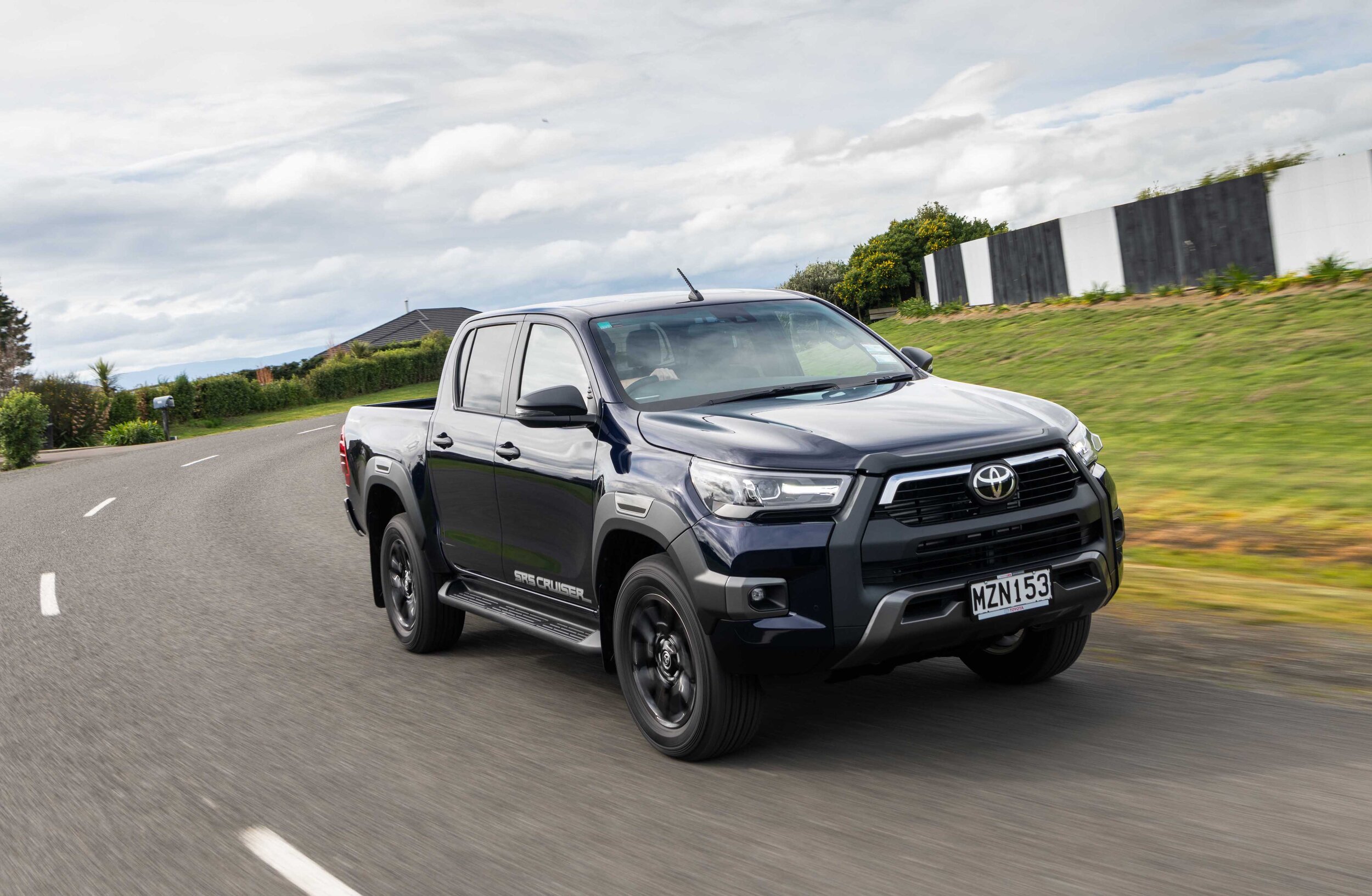
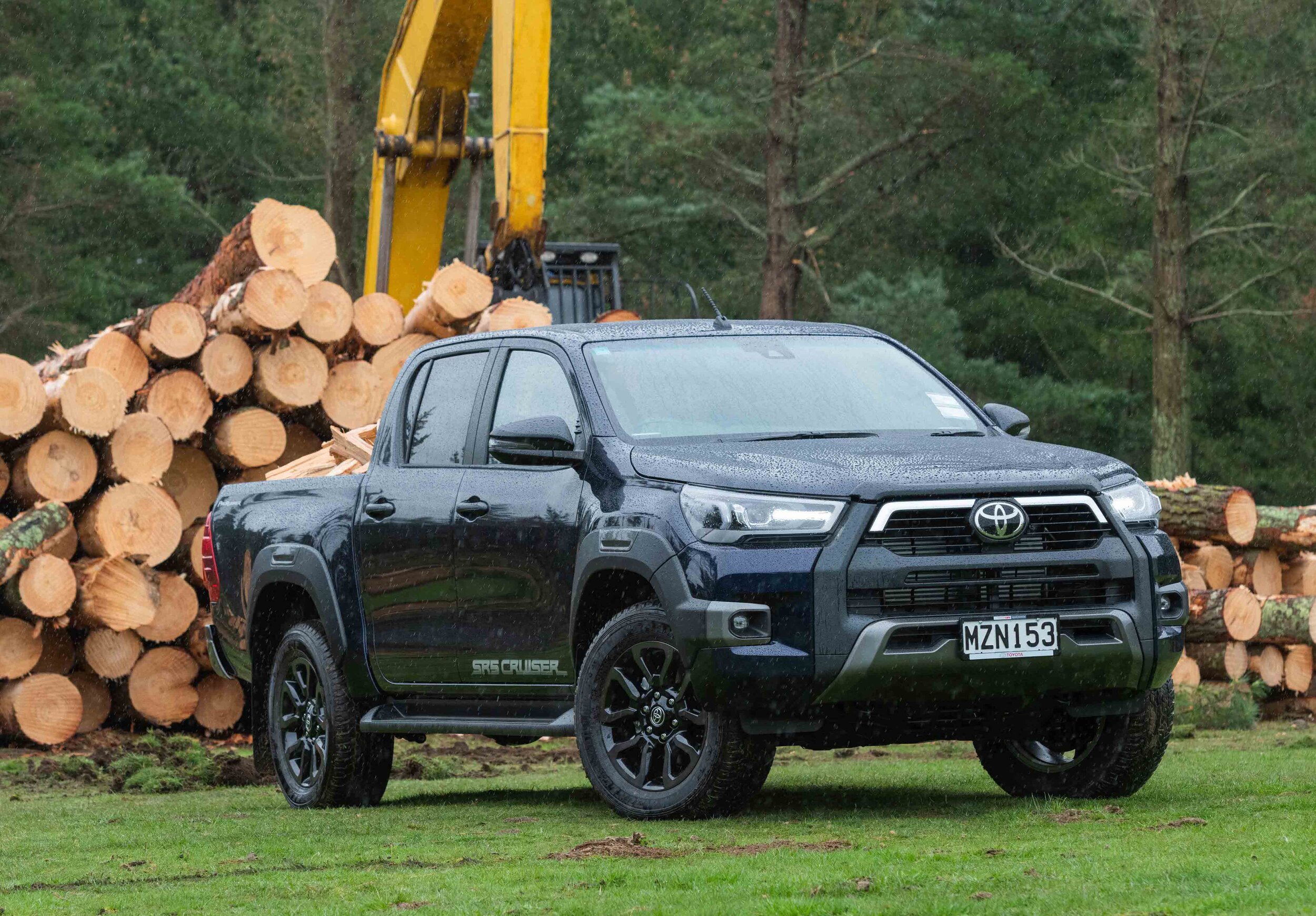
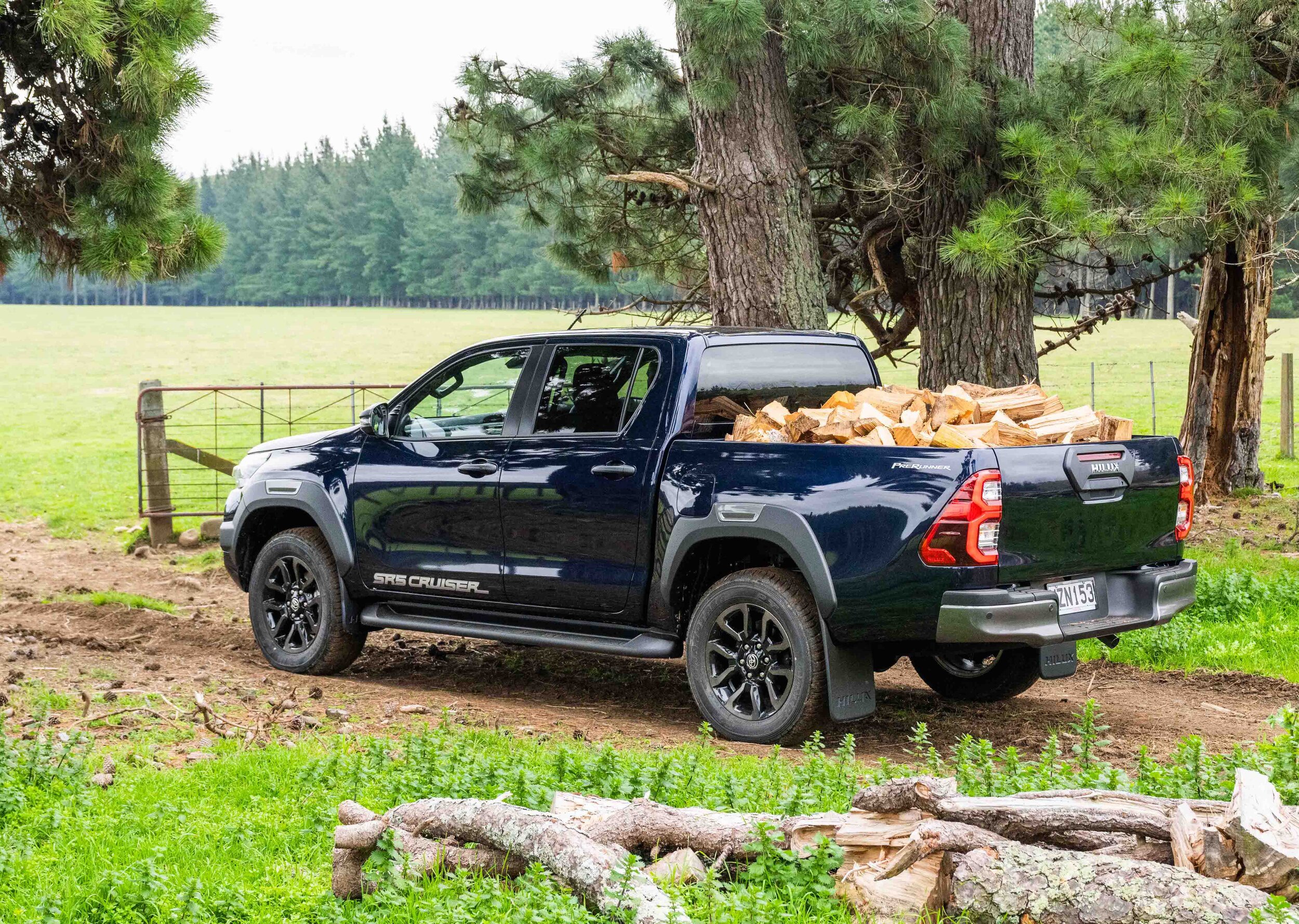

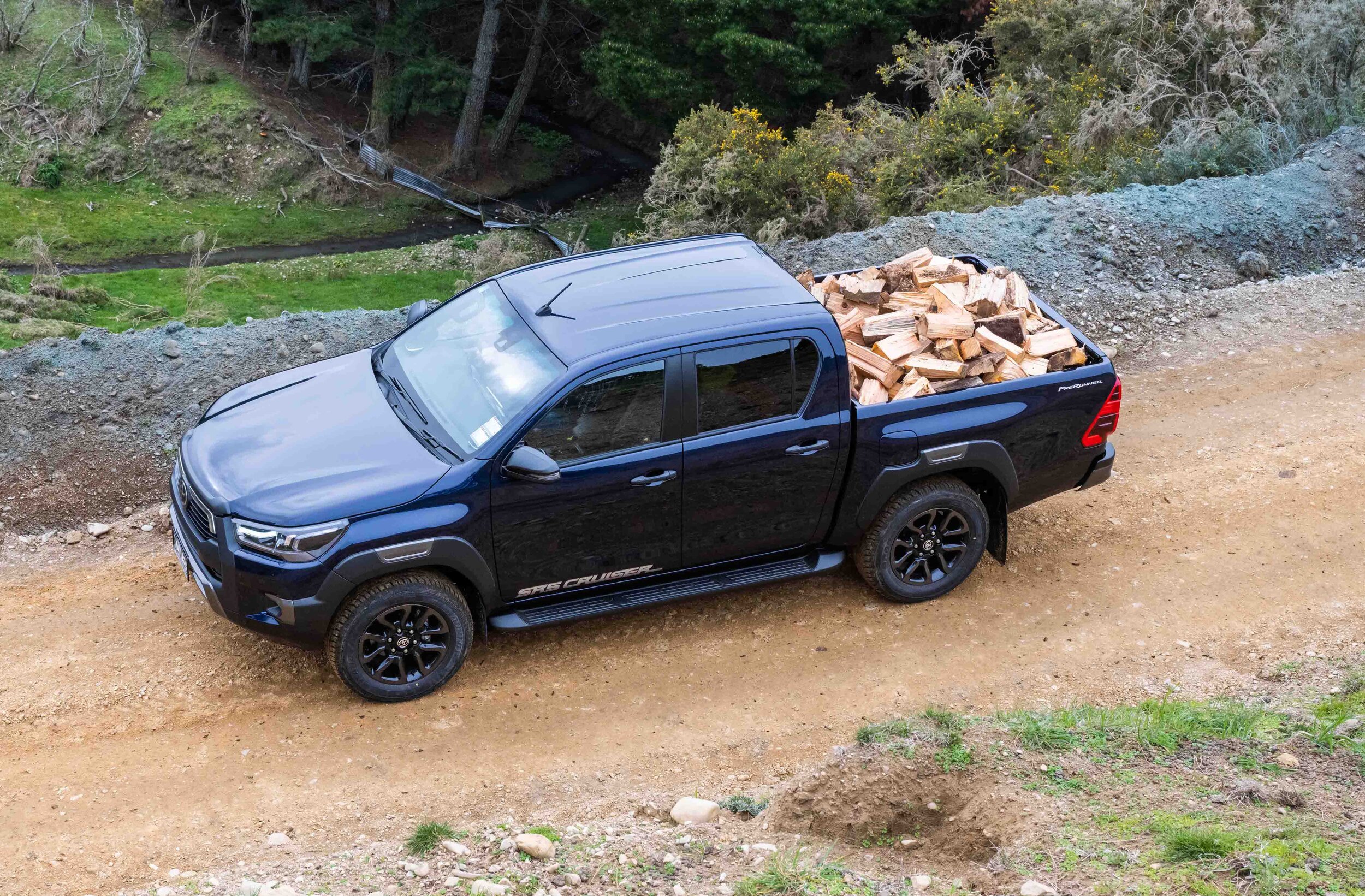
To achieve those five stars – the maximum score – under the new rules, as the Isuzu D-Max has done, it would need to adopt kit Toyota has not provisioned and may not deliver for this model’s remaining time in production.
Requisite are advanced safety features such as rear cross-traffic alert, blind-zone warning, lane-keeping assistance (it has lane-wander warning only), and a centre airbag between the front seats. There’s no suggestion Hilux is unsafe – indeed, it scored well for occupant protection particularly in 2019 – but fact is the testing is more focussed now on rewarding vehicles with the tech that helps a driver avoid an accident in the first place.
Has Toyota done enough to see Hilux, in orthodox turbodiesel state, through its remaining years on sale? It’s undoubtedly a much better truck, now, than it was five years ago. You’d say that solely on strength of experiencing the dynamic qualities and the improved engine, though it deserves credit for shaping up in other areas, too.
The imponderable in writing this now is not knowing, yet, how good the opposition is. But we won’t have long to wait. The all-new Isuzu D-Max goes on sale locally very soon, it’s Mazda BT-50 doppelganger will be out in November. The next-generation Ford Ranger is due in the second half of next year.
Maybe Toyota isn’t out of the woods yet.
